




Power Quality Issues – Part 5 – Reactive Power and Power Factor 16 Rinnai delivers hot water at Scarborough Care Home 23 Keeping Commercial Heating Systems Clean 24 The role of CHP in the Net Zero economy 26 A buyer’s guide to sustainable education 10 The Benefits of Impact Investing for Businesses and the Environment 34 www.energymanagermagazine.co.uk FIVE MISCONCEPTIONS OF RETROFITTING – AND TIPS TO GET STARTED See page 12 SEPTEMBER 2023 INSIDE THIS ISSUE:
Build2Perform Live 2023 will feature:
Over 50 hours of approved CPD

150 Speakers across 7 theatres
Themes include:
• Delivering Net Zero and Adapting to Climate Change
• Hydrogen, Heating and Heat Pumps for Net Zero
• Electrical Services for a Zero Carbon Environment

• Adopting Digital Tools and Smart and Secure Technologies

• Implementing the Building Safety Reform Programme


• Health and Wellbeing
• Light2Perform
must-attend event in the building services sector Build2Perform 2023 is the With over 100 exhibitors www.build2perform.co.uk Register Now
SEPTEMBER 2023
Five misconceptions of retrofitting – and tips to get started


PUBLISHER: Ralph Scrivens ralph@ energymanagermagazine.co.uk
PRODUCTION: Sarah Daviner sarah@ energymanagermagazine.co.uk
ACCOUNTS: accounts@ energymanagermagazine.co.uk


PRINT: Mixam Print
is published 10 times a year by Energy Manager. www.energymanagermagazine.co.uk
42 Wymington Park, Rushden, Northants, NN10 9JP Tel: 01933 316931
Email: mail@ energymanagermagazine.co.uk
REGISTRATION: Qualifying readers receive Energy Manager free of charge. The annual subscription rate is £80 in the UK, £95 for mainland Europe and £115 for the rest of the world.
Single copies £10.
Some manufacturers and suppliers have made a contribution toward the cost of reproducing some photographs in Energy Manager.
PAPER USED TO PRODUCE THIS MAGAZINE IS SOURCED FROM SUSTAINABLE FORESTS.
Please Note:
No part of this publication may be reproduced by any means without prior permission from the publishers. The publishers do not accept any responsibility for, or necessarily agree with, any views expressed in articles, letters or supplied advertisements.

All contents © Energy Manager Magazine 2023
ISSN 2057-5912 (Print)
ISSN 2057-5920 (Online)
INSIDE ENERGY MANAGER MAGAZINE • SEPTEMBER 2023 3 4 News 10 Opinion 14 Monitoring & Metering 18 Decarbonisation 20 Energy Storage 21 Exhibition News 22 Steam Systems 24 CHP 28 Heat Networks 29 Energy Supply 30 Renewable Energy 33 Heating 34 Energy Finance 35 Sustainable Construction 36 Microgrids 38 Training
FRONT COVER STORY: See page 12
ENERGY MANAGER MAGAZINE
LEEDS CITY COUNCIL OPENS UK’S FIRST SOLAR POWERED ALL ELECTRIC PARK AND RIDE SITE SERVED BY ZERO-EMISSION ELECTRIC BUSES

Leeds City Council has opened the UK’s first solar powered Park and Ride in Stourton, serviced by electric buses that link the Park and Ride to Leeds city centre. Stourton is Leeds’s third Park and Ride site and the first that is powered by solar modules coupled with a battery storage system, with carbon emissions being reduced by approximately 471,000 KGCO2e in 2022.
The project comprises a 1.2MWp SolarEdge solar system, smart EV charging infrastructure and a 950kWh battery that allows solar to power the site outside of daylight hours. The system is expected to generate 852,000 kWh of electricity a year. The PV panels are located on carport canopies that also provide shelter above parking spaces. Solar energy generated by the system also powers the depot’s lighting, CCTV, and heating in the waiting room.
The project is a key part of Leeds City Council’s strategy to hit carbon zero by 2030 and reduce congestion and pollution in the city centre. The project was partially funded by the Department for Transport and a grant awarded by the European Regional Development Fund. With the battery storage in place, around 12% of the energy produced by the site will be exported to the grid, with the remainder stored and used to help power the facility outside of daylight hours. By load shifting using the battery, grid import to the site is expected to be zero for most of the time.
Solar installer, Evo Energy chose a SolarEdge DC-optimised system to compliment the curved solar arrays,
where string inverters would have struggled to overcome energy loss due to module-level mismatch, and meet Leeds City Council’s energy generation targets and module level remote monitoring requirements. Each pair of solar modules is connected to a SolarEdge Power Optimiser that enables each module to operate at its maximum efficiency, thus minimising the effect of any shading, uneven panel degradation or heavy soiling. Traditional strings would restrict the module performance to the output of the lowest-performing module on the string. This means that energy production will be higher in future years too, as solar modules age at different rates, exaggerating the string effect. To create a polished appearance for the site and for the efficiency of electrical distribution, nine SE82.8K and a SE17k SolarEdge inverters are located in the terminus building itself. With integrated SolarEdge SafeDC™ technology, the inverters are designed to reduce the system to a touch-safe 1V to allow routine maintenance or in the unlikely event of
an emergency. The system also includes the Solaredge Firefighter Gateway, which will shut down the whole system when either the fire alarm is activated or a E stop button is pressed.
“This project is a sustainable example for other cities in the UK to follow. This site highlights how a project can positively impact a community, the local economy, and businesses throughout the city by enabling renewable energy powered transportation and enhancing the volume of transport links. It’s a great step for-ward in sustainable electrification of transport, while overcoming local grid limitations and the essential need for smart energy solutions”, said Jonathan Roper, Principal Renewable Energy Consultant, EvoEnergy.
https://www.evoenergy.co.uk/

BCIA RELEASES NEW TECHNICAL GUIDE ADDRESSING EMBODIED CARBON
The BCIA’s Technical Working Group has produced a new Technical Guide to add to its online portfolio of Guides available to download.
The new Guide is titled “Building Energy Management System (BEMS) Design and Embodied Carbon” and highlights how embodied carbon can be reduced in BEMS systems.
Embodied carbon is the equivalent carbon dioxide (CO2) emissions
associated with materials and construction processes throughout the whole lifecycle of a building. With all new contracts, consideration for Embodied Carbon reduction must be included in the BEMS design.
BCIA President Graeme Rees said: “The BCIA Technical Guides are a vital tool designed to help members and anyone working in the building controls and BEMS industry work more effectively. This latest Guide
details the importance placed on the reduction of carbon emissions by governments around the world and the steps consultants and specifiers can take to reduce Embodied Carbon, including early engagement with clients and ensuring the most up to date BEMS controls are installed.”
All Technical Guides can be downloaded from the “Technical Guides” section of the BCIA website. www.bcia.co.uk
ENERGY MANAGER MAGAZINE • SEPTEMBER 2023 NEWS 4





LOW CARBON FLEX IS THE ONLY WAY TO REACH NET ZERO – AND THE SYSTEM MUST CHANGE TO ALLOW IT
The future net zero energy system must be properly balanced, says the Association for Decentralised Energy (ADE) in newly published proposals for electricity system operations reform under the Review of Electricity Market Arrangements (REMA) in its latest report ‘Finding the Balance for a Net Zero Future’.
The paper outlines five pillars that the ADE believes should underpin the operation of an efficient net zero electricity system and the proposals for making them happen. The Department for Energy Security and Net Zero (DESNZ) has identified the need for new approaches in how we operate the electricity system as a key element of the case for change in REMA. However, the ADE states that reforms needed to balance the system and keep it operable have not been analysed sufficiently.
In the paper the ADE has devised five principles, or ‘pillars’, that must underpin
a decentralised, net zero energy system: Balancing is decarbonised Assets can participate in balancing on equal terms, without regard to their size
• Dispatch decision-making is efficient and transparent
• Grid reinforcement is not the sole answer to physical constraints
• Balancing is cost-effective against outages
The ADE warns that continuing business as usual will undermine the objectives of REMA and that more transformative change is needed. A successful REMA will enable a truly flexible energy system and allow the real value of the UK’s renewable resources to be captured, instead of wasted.
Sarah Honan, Flexibility Policy Manager at the ADE, said: “Many of the more radical electricity market reforms we’ve seen debated over the past 18 months have, at their core, stemmed from a lack
of confidence in our current systems’ and structures’ capability to deliver net zero.
“However, options for operational reform, beyond the remit of the wholesale market, have become somewhat lost in these discussions. Moreover, the timeline for how reforms will interact and provide stepping stones throughout the 2020s to increasingly transformative change by 2035 has not been addressed. Recognising the problems of today, how they will evolve in the future, and how we can change trajectory is our core priority throughout this paper. Exponential increase in low carbon flexibility is the only path for reaching net zero in a cost-effective way. Certainty of direction, consistency of delivery, and when the time comes, clarity of design will provide industry and other stakeholders with the confidence needed to invest in flexibility.”
www.theade.co.uk
NEW GUIDE TO HEAT NETWORK REGULATIONS SHOWS BENEFITS OF COMPLIANCE
Switch2 Energy has published an updated guide to the Heat Network (Metering and Billing) Regulations (HNR). This explains what communal heat scheme operators must do to gain compliance and achieve cost and carbon efficiency savings.
The regulations enforce better metering and billing standards on all of the UK’s communal heat schemes – to improve system performance, fairness for customers and carbon reduction. Legislation forms a cornerstone of international policy to drive energy

efficiency on the journey to net zero. The free HNR guide explains:
• Which buildings and schemes are covered by regulation How to prevent civil and criminal penalties from regulatory enforcer (Office for Products & Safety Standards)
• Why energy price increases mean operators should re-assess final metering viability & how to use the cost effectiveness tool (CET)

• Inclusion of the Energy Bill Discount Scheme
• Clarity on compliance dates
• Rules on regular and transparent customer billing
Updates to the notifications template
Richard Harrison, CEO of Energy Switch2 said: “The regulations are key to driving better practice and are so much more than a box-ticking exercise. Those operators using compliant metering and billing systems achieve higher network efficiency and lower cost and carbon emissions, which also benefits residents.
“A critical part of the regulations is final customer metering. In our experience, installing smart final customer meters on unmetered heat networks can deliver energy savings of up to 50%.
With today’s higher energy costs, we could urge operators to complete a simple CET assessment to prove the fast economic returns and ongoing cost and carbon savings of installing these meter systems in residents’ homes.”
Download the ‘Updated Guide to the Heat Network (Metering and Billing) Regulations’ from https://content.switch2.co.uk/ heat-network-regulations
More information: https://switch2.co.uk/
ENERGY MANAGER MAGAZINE • SEPTEMBER 2023 NEWS 6
In accommodation where the rent includes the cost of heating, the room occupant has control over how much energy they use. Prefect products enable Energy and Accommodation Managers to take control of energy use, while ensuring rooms remain comfortable.
LOCAL CONTROL
• Room temperature
• Setback, Boost & Frost
• User adjustment
• Open window
• Absense detection
• Tamper-proof
• Programmable
• Electric or wet systems
• up
CENTRAL CONTROL
All ecostat2 features

+ Secure portal access
+ Humidity
+ Light
+ Sound pressure

+ CO 2
+ Water heating
+ Leak detection
• up to 40% savings *
PrefectControls.com
Central control
Local control
to 30% savings * * Savings are dependent on current control methods, infrastructure, location and profiles adopted.
for product comparison
Scan
NFU Energy unveils brand-new energy price comparison tool

NFU Energy, one of the UK’s leading energy consultancies, has launched a brand-new energy price comparison website. This new tool aims to empower businesses across all sectors by enabling them to easily compare energy prices and switch to suppliers offering more favourable deals tailored to their needs. With energy costs being a significant expense for a variety of enterprises, finding the most competitive energy deals is crucial. This user-friendly online comparison tool simplifies the process of comparing and switching energy suppliers. Businesses can input their energy consumption details and preferences, such as contract length and trading type, and in just a few clicks, they can view a comprehensive list of
energy suppliers’ tailored offers, making it easier than ever to evaluate and select the best option for their business.


NFU Energy has established strong partnerships with a wide network of energy suppliers, ensuring a diverse range of options. These partnerships enable businesses to benefit from exclusive rates and favourable contract terms that may not be available through other channels. By using the tool, businesses can potentially unlock significant savings on their energy bills, as well as saving valuable time and effort.
Joshua Robinson, Head of Contract Sales at NFU Energy said: “The launch of this new initiative marks a significant milestone for NFU Energy. Whilst this
new tool will not replace our fantastic customer support team, it will certainly complement our service, giving customers the flexibility to compare contract deals in a matter of minutes, at any time of day.”
NFU Energy is committed to supporting UK businesses in their pursuit of sustainability and profitability. The launch of this online energy price comparison tool is part of its ongoing efforts to provide businesses with the tools and resources needed to navigate the evolving energy landscape efficiently. www.nfuenergy.co.uk
GREEN HEAT NETWORK FUND SUPPORTS
HEATING
Cheshire East Council and Plymouth City Council have been awarded almost £4 million from the Government’s Green Heat Network Fund (GHNF), delivered by Triple Point Heat Networks Investment Management. Two networks will provide low cost, low carbon heat to homes, shops, theatres, and public buildings at opposite ends of the country: in the North of England and on the South Coast.
Heat networks are vital to making Net Zero a reality in the UK and are recognised as a key method for decarbonising the UK’s building stock at scale, supporting the creation of local green jobs and reducing the energy bill burden placed on consumers. The projects announced today are representative of our commitment to expand sustainable, cost effective and future-proofed heating capacity to residents and businesses nationwide.
Ken Hunnisett, Programme Director for Triple Point Heat Networks Investment Management, said: “The Green Heat Network Fund is transforming communities up and down the land. More than just providing affordable and sustainable heating and hot water, these two projects demonstrate the ability of heat networks to support the growth of local economies through green job creation.”
Lord Callanan, Minister for Energy Efficiency and Green Finance, said:
“We want to cut emissions in towns and cities across the country, while creating jobs and opportunities in local communities along the way.
“Our Green Heat Network Fund is helping to do just that and with £4 million of this Government support, these heat networks in Cheshire and Plymouth will become the latest cities to rollout new green technology. It will mean homes and businesses in the area can ditch costly fossil fuels once and for all for a cleaner, more secure heating source.”
Plymouth City Council has been awarded £1.2 million for the extension of their existing heat network which currently serves the Council House and Guildhall. The installation of a 480kW air source heat pump will provide sustainable heating to the redeveloped Civic Centre (which, when complete will comprise 144 new homes and a commercial space) as well as the Theatre Royal and Plymouth Combined Courts. Nearby developments in the City Centre and Millbay are also being considered for future connection.
Councillor Tom Briars-Delve, Cabinet member for the Environment and Climate Change, said: “I’m really pleased to gain this funding to help us further decarbonise a number of Plymouth’s most prominent public buildings.
“In order to bring other partners across our city on board, we have to
set the standard and the Civic District Heat Network does just that by proving that there is a viable and effective alternative to fossil-fuelled heating.”
Cheshire East Council has been awarded £2.6 million for the commercialisation and construction of the Handforth Garden Village Heat Network. GHNF funding will support the first phase of the project to deliver low carbon heat to 600 new homes, a hotel, primary school, shops, and an extra care facility. The primary phase of the network also includes the construction of a purpose-built energy centre and the installation of two 521kW aquifer ground-water source heat pumps. Two subsequent phases will build out in line with the housing development, connecting 1,500 new homes in total.
The garden village in Handforth is one of just a small number of government designated Garden Villages.
Garden Villages are an essential part of urban development which help to create vibrant, diverse, affordable, and sustainable communities giving residents access to retail, leisure, healthcare and education facilities.
For more information about Triple Point Heat Networks Investment Management, applying for GHNF support, successful projects under GHNF and HNIP, and BHIVE, visit: www.tp-heatnetworks.org.
ENERGY MANAGER MAGAZINE • SEPTEMBER 2023 NEWS 8
TWO COMMUNITIES TO ADOPT “CLEANER, MORE SECURE”
FOCUS ON DELIVERING VALUE TODAY
FOR A SUCCESSFUL AND SUSTAINABLE TOMORROW
To engineer a more efficient, safer and sustainable world you need the right steam and thermal energy partner. Whatever your key drivers, Spirax Sarco have you covered.


Find out more at sxscom.uk/advance
Sustainability Efficiency Safety Energy Management
A BUYER’S GUIDE TO SUSTAINABLE EDUCATION
The UK is home to nearly 30,000 maintained schools, all of which will play a pivotal role in the fulfilment of the government’s Net Zero Strategy. With the effects of the climate crisis continuing to threaten how we live and work, making the built environment more sustainable is imperative. Dan Allison, divisional director of Net Zero Buildings (NZB), explores how schools can join the decarbonisation movement by investing in offsite construction to sustainably protect and expand their assets.
As the costs of energy and materials rise and the impact of carbon emissions increases in severity, it’s time for schools to consider more sustainable methods of extending their facilities. The DfE’s recent allocation of £450 million in funding to improve school buildings has provided an opportunity to achieve this by investing in offsite solutions that create high-quality, environmentallyfriendly learning environments. Working flexibly with tight public sector budgets, offsite construction can reduce energy demands in a cost-effective way, offering a reliable investment for schools looking to protect and futureproof their facilities.
CHOOSING THE RIGHT PROVIDER
The latest figures from the Department of Education (DEFRA) show that the UK produced almost 60 million tonnes of nonhazardous construction and demolition waste in 2020, the breakdown of which has contributed greatly to greenhouse gas emissions. For schools to meet both their own net zero targets as well as those of the government, it’s vital that less wasteful methods of construction are considered for future school buildings. Whilst this aim may seem daunting at first, a practical place to start would be to consider options which are both sustainable and financially agile.
SCHOOLS MAY WISH TO INITIALLY CONSIDER:
1. LEAN, CLEAN AND GREEN TECHNOLOGY
With the right contractor on board, schools can maximise their buildings’ energy efficiency by incorporating sustainable features, such as LED lighting or solar thermal heating into the build.
These should be a combination of lean, clean and green technologies that use less energy, utilise local energy
sources and produce renewable energy for use either within the facility or to be sold back to the grid.
These technologies help schools to become more sustainable, lessening the impact of their new facilities and empowering them to facilitate the next generation of school buildings. In turn, such technologies give schools more freedom with their budgets by keeping energy costs to a minimum, providing an opportunity for schools to capitalise on the renewable energy they generate.
2. SUPPLY CHAIN

Once financial flexibility is secured, schools should aim to work with a building provider that will apply more sustainable practices to produce the facilities required, using ‘greener’ modern methods of construction. Companies that use offsite construction could be an ideal solution, due to the employment of lean manufacturing techniques. This involves the use of a precision-engineered system to eliminate wasted materials where
possible. Net Zero Buildings (NZB) takes this one step further, turning the smallest of offcuts into biomass fuel and recycling non-combustible boards. These practices ensure zero waste goes to landfill and are key to helping schools cut down their footprints when procuring new facilities.
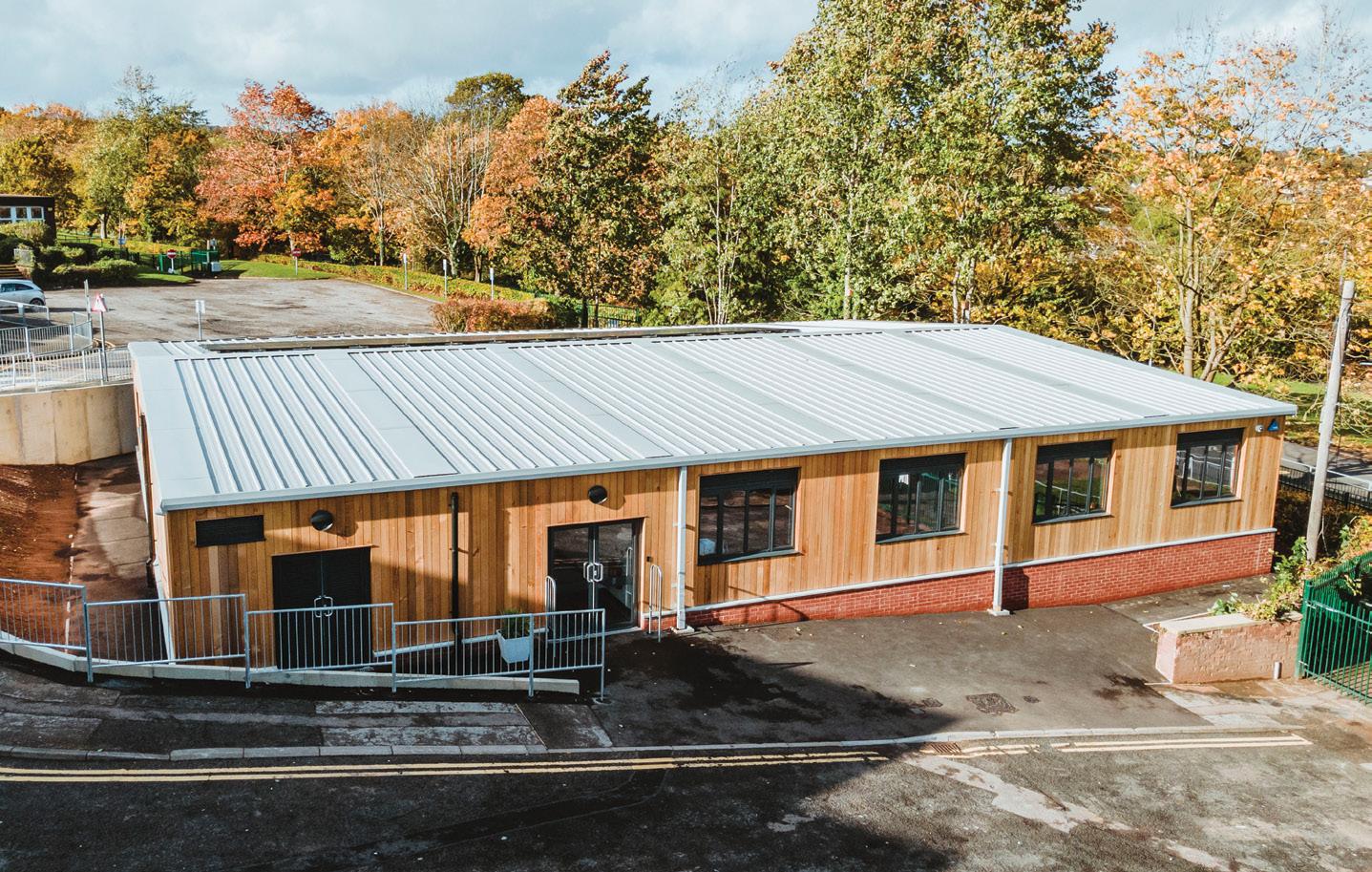
Schools can also improve their commitment to sustainability by choosing companies who make use of local suppliers and workforces to limit transport emissions. Doing so will ensure schools keep their carbon footprint to a minimum whilst supporting local businesses at the same time.
3.
FINANCING
Before schools begin to consider the type of building they might want, it is important to explore flexibly-funded products that can be tailored to their specific requirements. This will ensure that financial constraints don’t obstruct the path to sustainability.
Flat rate contracts that enable funds to be spent over a set period are often ideal, particularly those that can cover all the design and construction costs or fund a
10 OPINION ENERGY MANAGER MAGAZINE • SEPTEMBER 2023
Disruption to school activities is minimised with offsite solutions. Source: Net Zero Buildings.
large proportion of the project. This flexibility enables schools to receive the best facilities in a way that best suits their budgets.
4. MAINTENANCE

Given the responsibility schools have to support present and future generations of students, it is paramount that facilities are kept to a high standard. Another advantage of offsite construction in this regard is the ability to carry out proactive and reactive maintenance throughout the building’s lifecycle. This ensures schools and students can continue to flourish and grow in a quality environment. Choosing offsite solutions is therefore a way for schools to invest in protecting their assets, safe in the knowledge that new buildings will continue to perform in years to come.
SUPPORTING EDUCATION WITH OFFSITE SOLUTIONS


Traditional and offsite construction differ in several ways, but none more so than the sustainable benefits that offsite construction provides. Manufacturing building parts in a controlled, factory environment naturally reduces site activities such as vehicle and personnel movements, limiting the emissions generated. This ensures that the
building’s embodied carbon – the emissions produced during the construction of a building – is limited, thereby reducing the school’s footprint through association.
The accuracy of offsite manufacturing additionally makes it easier to modify a building’s design and factor in multiple sustainable features that will boost energy efficiency. NZB is at the forefront of this; incorporating clean, lean and green technologies, such as solar panels, to decrease operational energy costs throughout a building’s life cycle.
Examples of these technologies for schools to consider include mixed mode ventilation, daylight and occupancy sensors, battery storage and green roofs. The combination of green technologies – eg solar panels with wind turbines powering intelligent lighting and heating systems – can result in such low operational carbon and so much renewable energy generation that the school uncovers a new revenue stream by uploading its surplus energy to the National Grid.
Offsite solutions can also ensure energy efficiency because buildings are thoughtfully designed to minimise thermal bridging and to be more airtight thanks to being manufactured to precise tolerances in a factory. Heavily insulating
modular buildings also means heat loss is minimised so modular buildings inherently have lower U-values.
ENHANCING THE NEXT GENERATION OF LEARNING
As schools face pressures to comply with national net zero goals, the speed of the provision of modern learning environments becomes key, explaining why offsite construction is growing in popularity.
Ensuring that a construction partner understands how the spaces will be used for teaching and learning as well as how to optimise them sustainably, is crucial. It’s not just about a building; but also creating facilities that encourage happiness, good health and productivity for purposeful, high quality learning experiences.

The focus on zero carbon buildings will also help to inspire a dedication to sustainability amongst staff and students alike, as these environments provide current and future generations the opportunity to experience the benefits of energy efficiency first-hand.
To learn more about offsite construction and the application of clean, green and lean technologies, visit https://netzerobuildings.co.uk/
11 OPINION ENERGY MANAGER MAGAZINE • SEPTEMBER 2023
FIVE MISCONCEPTIONS OF RETROFITTING –AND TIPS TO GET STARTED
Martin Hodgson,
Regional Sales Manager, Northern Europe, at Paessler AG

As the automation of processes and digitalisation continues to accelerate, IT and OT are merging - achieving notable improvements as a result. It’s now possible to combine data in entirely new ways. Masses of data can now be both collated and analysed with ease as the Industrial Internet of Things (IIoT) and analytics continue to transform the IT landscape. Adopting effective preventive and predictive maintenance methods has become far easier due to these developments, streamlining decision-making processes.
However, outdated machinery on the factory floor that lacks the necessary components for data collection can still present significant challenges. Legacy IT infrastructure in office buildings present issues too. Required connectivity may be lacking; as well as data interfaces, and data points to support modern data-gathering scenarios.
So, in a world where new solutions are being innovated every day, how can businesses retrofit their operations to keep up with the times and run an efficient company? Here are five of the myths around retrofitting and how to get started.

MYTH #1: IT’S TOO COSTLY TO BRING TECH UP TO DATE
Tip: The cost-saving benefits behind retrofitting: the practice of making expensive legacy equipment compatible with machines that use modern IT is where the beauty of retrofitting comes into play. By equipping the machines with additional sensors to gather data for IIoT applications like condition monitoring or predictive maintenance is a trend which has grown tremendously as companies look to harness data intelligence to improve and optimise certain processes without breaking the bank.

MYTH #2: IT’S IMPOSSIBLE TO ADDRESS THE CHALLENGES LEGACY INFRASTRUCTURE PRESENTS
Tip: Examine, process and analyse your infrastructure: when undertaking a retrofitting project, it entails the integration
of new machinery, sensors, gateways, and other communication devices into the existing industrial network. To make the whole process as simple as possible, it is essential to have a clear understanding of the capabilities of your current network infrastructure. This involves assessing the performance and capacity of your industrial networking hardware and considering any bandwidth limitations that may exist to iron out any potential problems before they arise.
MYTH #3: IT AND FACILITIES MANAGERS LACK DATA
Tip: Take inventory of the data you actually need: the best way to start is to work backwards and write down all the data you need to track, and then analyse the machinery and equipment in place to know where the gaps are when it comes to data monitoring.
Quite often IT and Facilities Managers are surprised by how much data is at their fingertips, it’s just a question of joining up the dots before and during the retrofit process. Quite often there are a lot of different types of data that need to be collected and analysed about the IT and OT infrastructure that they need a monitoring tool that is able to bring in data from IIoT sensors, OT systems, and traditional IT components.
MYTH #4: MONITORING THE DATA CENTRE ISN’T A PRIORITY
Tip: Environmental monitoring isn’t just necessary – it’s essential: in order to future-proof a building, its hardware and machinery are important aspects of the retrofit process to monitor the environment such as humidity, temperature and air conditioning. This is an essential practice to protect data centres, servers, hardware and prevent downtime, fire hazards or unexpected and costly repairs. Additionally, during the retrofit process securing the physical infrastructure involves employing door lock systems, installing
alarm systems, the utilisation of cameras, motion sensors, and even heat sensors becomes crucial as well as setting up alerts to promptly respond to any breaches.
MYTH #5: THERE IS TOO MUCH CHOICE WHEN IT COMES TO SOFTWARE OPTIONS
Tip: Implementing holistic network monitoring should be seen as part of an overall business strategy: while the addition of sensors to machines during a retrofit is undoubtedly crucial, it represents just one aspect of the broader picture. To derive meaningful insights and make informed decisions, it is equally essential to effectively analyse the data collected by these sensors and convert it into actionable information. By harnessing all that state-ofthe-art software tools have to offer, businesses can increase the value of their networking monitoring efforts. When issues are identified proactively rather than reactively, optimising performance becomes easy. Overall operational effectiveness is streamlined as every decision is driven by data. In a market that is increasingly crowded, insights-led strategy is key when keeping pace with competitors. www.paessler.com
12 OPINION ENERGY MANAGER MAGAZINE • SEPTEMBER 2023
Battery energy storage: powering the future of smart buildings










Connected Energy specialise in battery energy storage systems that give businesses flexibility over their power. Our systems are helping organisations, across the UK and Europe, to deliver smarter energy solutions on their journey to net zero.

Find out how:



connected-energy.co.uk

INDIVIDUAL ROOM MONITORING MAXIMISES CONTROL


Mark Homer is a Director of Progressive Property, a company he co-founded in 2007. He has developed more than 1000 units and his personal portfolio is valued over £40M. Predominantly private residential rooms, his company provide 1300+ tenants with properties around Peterborough.
With energy prices high, he’s acutely aware of the need to control consumption. Particularly where tenants enjoy all-inclusive rents.
Mark explains his experience of some tenants’ approach to heating control. “It’s quite simple, the thermostat gets put right up to maximum, which might be 30°C, then the room temperature is regulated by opening the window”.
A common occurrence in rented rooms, particularly student accommodation. But an increasing number of young professionals are opting for room or studio rental. These are typically Mark’s tenants.
Many decisions that affect return on investment are made when developing a property. For example, should heating be electric or gas powered?
Mark explains, “It depends on the development and what the M&E Consultant advises to meet the regulations. Wet systems historically, are cheaper to run. But issues with EPC/SAP calculations and capacity/availability of existing gas and electrical supply to the site, will determine the choice we make”.
Improvements in insulation and building techniques make electric more attractive, particularly the lower installation and maintenance costs. Changes to Part L of the building regulations make it easier for electric to comply.
Mark’s most recent project had electric heating, but he wanted to improve performance. He called the heater manufacturer for advice. “I had a couple of meetings with Atlantic, and they suggested I investigate Prefect Irus.
“I watched loads of videos on their website. They were great, as they explain what Irus is in a nutshell. I’d seen the system in a Study Inn property and thought, ‘they are a good-sized student operator’. That gave me confidence.”
An Irus control unit, in each room, gathers information for environmental conditions – temperature, humidity,
light, and sound pressure. It logs calls for heat, detects open windows and occupier absence – reducing input if rooms are empty. Existing electrical wiring communicates data to the portal, so installation is quick and inexpensive.
“We set time and temperature parameters on the portal. Our default is 18°C, with Boost to 24°C for 45 minutes. It then returns to default. I can see the temperature in each room, so if I receive a complaint about a cold room, I can check and assure them that it’s acceptable. A couple of times we’ve been alerted to temperatures exceeding our settings, one at 37°C! I asked Prefect, ‘What’s going on?’ They explained that a supplementary fan heater was being used. We had a word with the tenant, and it was removed, for energy and safety reasons.
“Likewise, if there are complaints of noise, I can look on the system and find evidence. When presented to the offender, things change quite quickly!”
Parameters are adjusted remotely via the internet portal from anywhere, and data is interpreted in a variety of ways.
“The Central Control element is brilliant because we don’t have to go into a room to see if a tenant is still there; has abandoned the room; or is claiming not to be there but actually is. Instantly we can see what is happening from all sorts of data”.
There is a fine balance in managing rooms. Tenants must be comfortable, but over-consuming
energy, either intentionally or unwittingly must be avoided.
Mark’s also reassessed control of water heating. Traditionally, cylinder elements work together to maintain water temperature. But integrated element thermostats are crude, imprecise and seldom adjusted after they are installed, meaning inaccurate indication of the temperature in the tank. Timing controls are rare, so invariably cylinders are fitted and forgotten.
With Irus, sensors measure the water temperature close to, but independent of the elements and feed data to the portal. Maximum efficiency profiles are set, and elements are switched independently depending on demand.
Mark was quick to maximise control, “I didn’t originally sign up for that, but I thought ‘that sounds like a good idea’. Instead of having both elements running almost constantly, Irus can switch them depending on need”. He continues, “There’s even a profile for monitoring DUoS” (Distribution Use of Service charges). Irus will switch elements on for 30 minutes before a DUoS red time band period and reduce input throughout.
Installation took place while rooms were occupied. Mark was surprised how little disruption there was, concluding, “Prefect did the whole project, end to end, for me, it’s not been stressful because they just do it all, and it works. Which is not that usual!” www.prefectcontrol.com
14 MONITORING & METERING ENERGY MANAGER MAGAZINE • SEPTEMBER 2023
PEL 103 Power & Energy Logger


Bridge the energy gap between today and tomorrow. Increase energy e iciency and reduce your costs.



Measure and monitor power usage. Identify ine iciencies and out of hours use. Discover power factor, phase balance and harmonic issues.



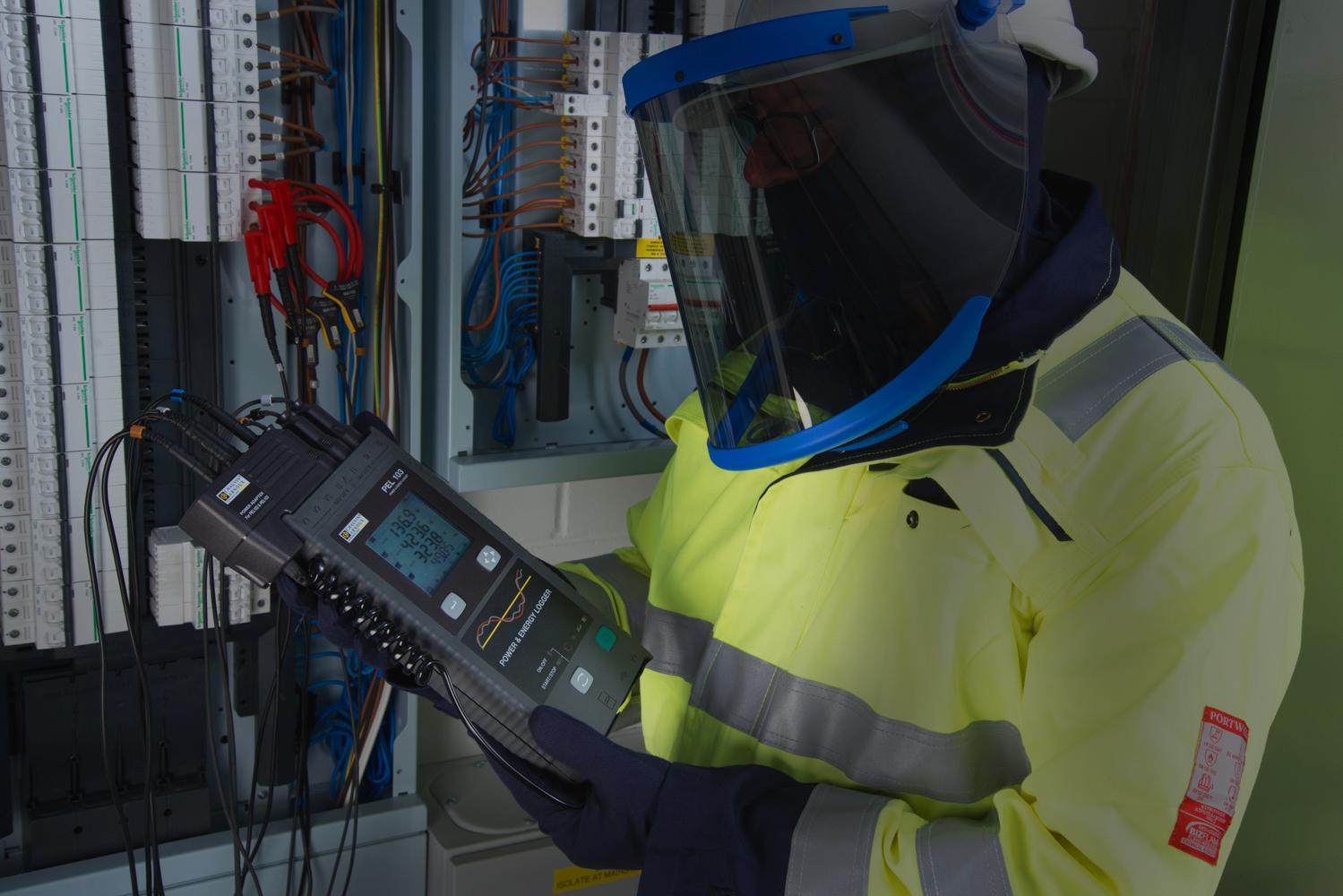
CHAUVIN ARNOUX UK Ltd | 125 YEARS IN BUSINESS | 30 YEARS IN THE UK 1 Flagship Square | Shaw Cross Business Park | Dewsbury WF12 7TH | T: 01924 460494 | E: info@chauvin-arnoux.co.uk
us to learn more
Contact
energy
are
and businesses
to
their energy
iciency. You can reduce
generation,
money and increase productivity. Gain a competitive advantage now with the PEL 103.
The key to a reduced carbon footprint & improved energy e iciency. Our future
needs
changing
need
improve
e
required power
save
HAVE YOU MISSED YOUR STREAMLINED ENERGY AND CARBON REPORTING DEADLINE?
In the pursuit of a more sustainable future, the United Kingdom has been steadfastly committed to addressing its carbon footprint and energy consumption. This journey began decades ago, spurred by influential initiatives such as the Intergovernmental Panel on Climate Change in 1988 and the United Nations Framework Convention on Climate Change established in 1992.
As a continuation of this trajectory, the UK government introduced the Streamlined Energy and Carbon Reporting (SECR) regulations in 2019, however, many businesses have failed to comply with the SECR guidelines. In this article, Julian Grant from Chauvin-Arnoux UK, revisits the regulation, discusses which businesses it effects and what’s required of them, and where it appears to be going wrong.
The SECR reporting framework replaced the CRC Energy Efficiency Scheme (CRC EES) and extended the scope of the existing Mandatory Carbon Reporting (MCR) regulations to include all large organisations. It aimed to use energy efficiency as a mechanism to help increase business productivity, and in doing so also improve the security of energy supplies, with the goal to reducing current demand by at least 20 per cent before 2030.
It was, and still is, aimed at companies with at least 250 employees or an annual turnover greater than £36m, as well as an annual balance sheet greater than £18m, which according to government statistics, would involve about 12,000 businesses. If a business met the criteria, it would be automatically entered into the scheme and the energy use, carbon emissions, and actions to improve energy efficiency of the business, would be made publicly available alongside some reference comparison metrics.
As the name suggests, the SECR
was designed to streamline and reduce complexity in the carbon and energy reporting landscape and broaden the scope for reporting compliance. However, discussions with business leaders and facility managers over the ensuing years have identified the complexity of the calculations as the major reason for many of them not getting on with it.

It was always known that compliance with SECR would involve added administrative costs and potential equipment investments, but that the benefits of achieving the proposed 20% enhancement in energy efficiency would outweigh these expenses. Nevertheless, the requirement for an inclusive energy management system that integrates people, processes, and technology, involves deep operational analysis to comprehend sustainable changes for implementation, along with the associated manpower, has created a lot of mixed feelings in the industry concerning its real worth.
After all, in the quest for improved energy efficiency, and for some time
now, many progressive businesses have already embraced advanced tools such as Power and Energy Loggers (PELs) to track energy consumption across their facilities and find opportunities to make savings. With insights from the Carbon Trust revealing a staggering 20% of electrical energy is being squandered due to inefficient equipment, and British Gas SME smart electricity meter surveys indicating that 46% of energy consumption occurs outside regular operating hours, employing PELs like the Chauvin Arnoux PEL104 to pinpoint and rectify these inefficiencies has already become an obvious course of action.
The PEL104 is a compact, lightweight, electronic monitoring instrument used for collecting electrical data which can be temporarily placed in distribution panels or around the facility without difficulty, and without the need to interrupt the mains supply or shut down the installation or office building first.
The PEL104 measures a whole range of electrical parameters, such as voltage, frequency, current, real

16 MONITORING & METERING ENERGY MANAGER MAGAZINE • SEPTEMBER 2023
power, reactive power, harmonic levels and more. Crucially, the PEL doesn’t only measure these parameters, it also stores the results over time, ranging from a few minutes to months.
Use of PELs has invariably led to situations where many businesses are implementing energy reduction and cost saving measures, but not necessarily going to the effort of complying with the SECR rules on analysing and reporting, which leaves them in a somewhat precarious legal position. Currently, businesses failing to meet SECR requirements are not being fined for their non-compliance, however, if it continues to be ignored that situation is likely to change. Other energy reduction schemes, such as ESOS, have already imposed fines as high as £50K on businesses that failed to comply.
Fortunately, the PEL104 offers a comprehensive solution for businesses to log, measure, and analyse electrical

energy use in real-time, capturing crucial data on energy consumption patterns, and identifying areas ripe for optimisation. By collecting granular information on energy usage, the PEL104 also enables companies to accurately evaluate the effectiveness
of their energy-saving initiatives and refine strategies accordingly. Just the sort of information a business needs to comply with their Streamlined Energy and Carbon Report!

www.chauvin-arnoux.co.uk

17 ENERGY MANAGER MAGAZINE • SEPTEMBER 2023 MONITORING & METERING
CLEVER CONNECTIONS FOR SUCCESSFUL DECARBONISATION PROJECTS
It’s all about connections. That’s what Salix’s Chiara Lorenzetti says, whose job it is to work with the public sector in pushing innovative decarbonisation projects through to successful completion.

Every day the teams at Salix strive to help organisations reach ambitious net zero goals as the company fulfils its role as government delivery partner for the Public Sector Decarbonisation Scheme and Low Carbon Skills Fund.
In the last two years Salix has delivered more than £2bn of government grant funding to tackle the decarbonisation of heat. Our primary aim is working with governments to help the UK meet its ambitious net zero goals.
In 2023 Salix was appointed delivery agent for the Wave Two of the Social Housing Decarbonisation Fund and Home Upgrade Grant, managing the schemes on behalf of the Department for Energy Security and Net Zero.
Like most ambitious and successful companies and teams, this involves teamwork as well as a collective approach.
Chiara is assistant director of programmes at Salix and one of her tasks is to build strong relationships with the Distribution Network Operators which are key to the success of the Public Sector Decarbonisation Scheme.
As the licensed companies that own and operate the network of cables, transformers and towers bringing electricity from the national transmission network to sites, they are pivotal to decarbonisation projects.
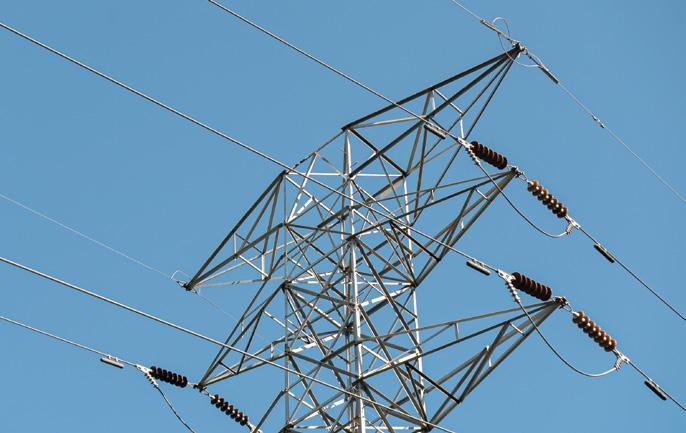
CONNECTION IS KEY.
It’s vital that project leaders think about their onsite electrical capacity long before

they require a connection. They will need to know how to make a request for more power and capacity upgrade and how to work alongside the Distribution Network Operator.
Chiara said: “There is a huge amount of expertise and experience within the Distribution Network Operator, and they are key to helping us all understand the power networks.
“At Salix we are working on hundreds of projects and these all face very tight deadlines, especially as they near completion. This means we need people to start thinking about how they will access power and feed their sites very early on in a project plan.

“The project planning can be intense, and every element of the supply chain needs to be considered and this includes the Distribution Network Operator connection and permits.
“Since it can take up to eight weeks, possibly longer to get a power increase quotation from a Distribution Network Operator, organisations really need to be thinking ahead.
“If you are installing a new heat pump and solar PV, permissions need to be sought in advance. Unfortunately, projects may get held up because of this and at Salix we see important deadlines missed simply because of a misunderstanding or basic lack of knowledge about the Distribution Network Operator processes.”
This is why Salix has been spearheading a series of webinars, in conjunction with Distribution Network Operator connectivity experts to explain the processes involved in the application. These offer an opportunity to showcase the work of the Distribution Network Operator as well as to explain basic steps in the process.
Salix met hundreds of people at the webinars in July and hopes to hold more events in the autumn.
These have proved valuable to public sector organisations considering embarking on a decarbonisation project or those starting the process having their funds secured.
Chiara added: “We are all learning about decarbonisation technologies at breakneck speed, but we can still get caught out by the planning elements.
“Our learning has shown us that we need to think further ahead, and from the moment we even think about installing new technologies and how we connect to the grid.
“We are getting there, and we will achieve carbon neutrality, but we need to work together and get connected. Our connections are key.”
Chiara’ tips for working with the Distribution Network Operator:
1. Visit your DNO website and capture any information you can to start with your request and expand your understanding of the works.
2. Understand what is realistically deliverable in your location in conjunction with your grant scheme timeline. A helpful tool that DNOs offer is a surgery meeting, where a member of the connections team is available to discuss options of connection on your estate. Alternatively, a point of contact is assigned to you once the request is submitted, and you can engage with them straight away.
3. Read your quotation carefully and understand your journey.
4. Act on your obligations and continue to engage with your supplier regarding the project delivery. Keep the DNO updated of any changes in your project timeline and energization.
5. Once you receive a quotation, accept your quotation and pay for the works as soon as possible. Only then, the capacity requested will be yours.
6. Consider re-risking your delivery by assigning part of your work to an independent DNO (IDNO). Carefully consider your internal team’s knowledge and capacity because this will bring a substantial part of the work in-house.
In 2023 Salix Finance was appointed Delivery Agency for Wave Two of the Social Housing Decarbonisation Fund and Home Upgrade Grant, also managing the schemes on behalf of the Department for Energy Security and Net Zero. www.salixfinance.co.uk
18 DECARBONISATION ENERGY MANAGER MAGAZINE • SEPTEMBER 2023
EXPLORING THE SYNERGY BETWEEN WATER AND ENERGY EFFICIENCY FOR CARBON GOALS
The race to achieving net zero is accelerating as more businesses, public sector bodies and consumers work to minimise carbon emissions.
Total global investment in low-carbon technologies passed the $1 trillion mark for the first time in 2022 according to research by BloombergNEF, as organisations continue to deploy a range of renewable and energy efficiency tech.
However strategies to improve energy efficiency rarely include water efficiency measures, despite the urgent need highlighted by frequent droughts.
However, ESG strategists need to take an approach that leverages the synergy between water and energy efficiency. Doing so will unlock significant energy and water efficiency benefits.
PURSUING WATER EFFICIENCY
Water use, as a finite resource is a key marker of environmental impact, and a benchmark of improved efficiency is a reduced per capita consumption (PCC).
Common solutions found in domestic and commercial settings to lower PCC often entails reducing use at the point of consumption. Examples include specially designed fixtures and fittings such as toilets, taps and shower heads.
Alongside this, we are increasingly encouraged to use water-saving behaviours such as reusing and recycling water.
Beyond these measures there are ways to increase the efficiency of the current water supply infrastructure, without significant investment. The solution compromises of a relatively straightforward retrofit within existing supply infrastructure, without the need to rip out and replace.
Achieving this reduction in PCC via the water supply infrastructure is not hypothetical, and it is within easy reach much like complementary energy efficiency solutions are, such as LED and solar panel installations.
WITHIN EASY REACH – OPTIMISING FLOW MANAGEMENT

At Cenergist, we currently work with seven water companies alongside local authorities to improve water efficiency.

Some of this is through patented Control Flow HL2024® technologies,
Caroline Gray Mason, Director – Water at Cenergist

reducing per capita consumption up to 22 per cent in domestic properties and 30 per cent in commercial properties.
Efficiencies are unlocked by eliminating flow variations caused by pressure fluctuations in the supply system – offering a controlled and steady flow with variations of less than two per cent.
Deployments have shown PCC reductions of 23 per cent in residential houses, translating to roughly 30 litres per day per person. For a household, this can be 73 litres per day.
Over the course of a year, this saves just under the equivalent of 24 x 12 x 4 ft rectangular swimming pool for each household.
The water efficiency gains we’ve witnessed in Control Flow retrofits mean the technology is now an integral part of many of our wider decarbonisation solutions.
Organisations can capitalise on this relationship to synergise water and energy efficiency, and by doing so, reduce emissions by a surprising amount.
UNLOCKING THE SYNERGY BETWEEN WATER AND ENERGY EFFICIENCY
Field tests of water efficiency programmes using Control Flow HL2024® technology have also revealed significant reductions in energy demands. For example, in Crawley, where PCC dropped by 23 per cent, gas consumption dropped by 7.63kWh per household per day. This was achieved from about 15 minutes of the boiler heating water with the flow rate reduced from 18 to 10 litres per minute.
The reasons behind the synergy is straightforward. As around 35 per cent of the water consumed in the home is heated, if you use less water overall, you need less energy to heat it.
The annual savings in terms of greenhouse gas emissions when Control Flow solutions are fitted equates to approximately 0.6t of
carbon per household, per year. On average, this was saving residents an average of approximately £360 on their annual utility bills.
This highlights how solutions that deliver tangible reduction in PCC at the infrastructure level have a big role to play in supporting not just fuel poverty, but net zero targets.
It is this synergy that also means Control Flow solutions are an essential component of emerging HVAC solutions including the growing frequency of ground and air source heat pump installations. As, like central heating, these centre around heating water, optimising flow means overall efficiency increases.
PROGRESSING TOWARDS CARBON NEUTRALITY AND NET ZERO TARGETS
As we inch closer towards the UK’s 2050 net zero target, green technology will become more prevalent in commercial, public and domestic settings.
At Cenergist, we operate at the forefront of this transformation across both water and energy, enabling us to witness and explore efficiencies in tandem.
The journey will be long for many as they progress and evolve ESG strategies and new innovations are yet to be seen. ESG strategists can take meaningful steps by changing their viewpoint on different technologies, including considering the holistic nature between water and energy.
If this became a widescale approach, the goal of carbon neutrality and net zero gets will get within easier reach. www.cenergist.com
19 ENERGY MANAGER MAGAZINE • SEPTEMBER 2023 DECARBONISATION
ACHIEVING DECARBONISATION
Matthew Lumsden, CEO of battery energy storage experts
Connected
For many years, energy managers have focused on reducing energy consumption by deploying a raft of efficiency measures. A growing number of buildings have installed LED lighting and maybe even an energy management system (EMS) – great ways to cut both carbon emissions and energy bills. Some might even have a rooftop solar array.
However, the next phase in the road to Net Zero is much more complicated, for two reasons. Firstly, because it is going to significantly add to almost any building’s energy load; and secondly because the lower-cost measures like LED have already been implemented. We’re now into the hard yards.
CHANGING PERSPECTIVES
At Connected Energy, we are increasingly seeing major corporations and the public sector use a new metric for investing in decarbonisation. In the past, they largely looked at costneutral technologies or even ones that benefited the bottom line. However, with high targets to meet, they are willing to make investments to ensure those goals are achieved. This means the metric is now based on the best price per tonne of carbon emissions saved. And in this scenario, battery energy storage systems (BESS) can be very attractive.
BESS use batteries to store and provide power as and when it is needed. In this way, they can help to manage spikes in demand while also enabling your buildings to use greener or cheaper electricity. They can also be a key part of an off-grid energy ecosystem.
WHY IS ENERGY CONSUMPTION GOING TO INCREASE?
Another reason more organisations are looking at BESS is because electrification is going to increase energy usage. In many cases, the next raft of decarbonisation measures for buildings includes installing heat pumps and more electric vehicle (EV) chargers – both are high-load items in terms of their pull on the grid. This can cause problems as a company’s energy supply contract includes something called its maximum import capacity (MIC), which is the
upper limit on how much power their premises can draw down from the grid. Crucially, most sites experience peak demand spikes, meaning that you might only be exceeding your grid connection capacity for short periods each day. In this instance, paying for a grid upgrade would not make commercial sense. What if there was a solution available that could not only help you to power these new technologies, and avoid a DNO upgrade, but could also integrate with both your EMS and your solar array? The answer could be battery energy storage.
HOW BESS CAN HELP ENERGY MANAGERS

BESS can solve many of the challenges facing facilities managers around these next steps for Net Zero:
1. Avoid a DNO upgrade
through peak shaving
A great deal of UK businesses are experiencing capacity issues as they expand their sites or introduce new technology such as EV charging and heat pumps. If a DNO upgrade will cost more than £200,000 then it’s worth looking at battery storage as an alternative.
2. Use more green energy
You can use a BESS to buy and store energy from the grid when renewable generation is high, helping to reduce your scope 3 emissions.
3. Integrate with solar
BESS can also help optimise the value of rooftop renewables by storing surplus ‘green’ energy to make it available as and
when it is required. This also boosts the return on investment from renewables. Crucially, if there is a large cost differential between the cost of energy export and import, then BESS can provide a real return on investment here.
4. Improve heat pump viability
BESS can make the difference when it comes to the business case for heat pumps, which can be marginal in the UK. Put simply, if you’re looking to install heat pumps, BESS can reduce the payback period of this infrastructure investment.
BESS IN AN ENERGY ECOSYSTEM
A battery energy storage system is integrated with a site’s existing energy infrastructure, sitting on the same meter points or substation as other assets on site. In addition to managing the peak loads of EV chargers or heat pumps, a BESS can also track other loads on site as well as the total site load. In this way, a BESS helps to ensure that your combination of site loads does not exceed your capacity limit.

BEST POSSIBLE SAVINGS
Connected Energy offers the most sustainable BESS solution possible. This is because we take batteries from end-of-life EVs and give them a second life in BESS, a unique proposition that is far more environmentally friendly than using a BESS with new batteries. Therefore, investing in BESS built with second life batteries can deliver even bigger decarbonisation benefits.
To find out more, visit our website connected-energy.co.uk
20 ENERGY STORAGE ENERGY MANAGER MAGAZINE • SEPTEMBER 2023
Energy, explains how battery energy storage can help energy managers meet their net zero goals.
REGISTER YOUR FREE PLACE NOW AT EMEX, THE ENERGY MANAGEMENT AND NET ZERO EXHIBITION!
Returning to London’s ExCeL on 22 & 23 November 2023,

Now in its tenth year, EMEX 2023 is even bigger and better than before and offers our audience even more in the way of learning, networking and technology to aid the transition to a net zero future.

This year’s conference programme across four different theatres is jampacked with some of the foremost thought-leaders in the space, as well as a huge range of practical case studies from those who are hands-on in the implementation of creating an energy efficient future. Led by Lord Rupert Redesdale, a key voice within government on the issue of sustainability, over eighty expert speakers will be presenting a range of panel discussions, technical and innovation showcase sessions, learnings and advice to visitors on how to move forward with their own net zero agenda. The four conference areas cover: Energy and Carbon Management Strategy, Sustainability and Net Zero, Built Environment and Transport and Energy Future and Flexible Networks, meaning there really is something for everyone. Check out the event website for further details of all the sessions as they are released.
EMEX is proud to be offering new features in its tenth year: Wates Group are one of the UK’s leading providers of planned and responsive maintenance services in the social housing sector and the show is delighted that they are taking centre stage this year with the Wates Pavilion. They will be showcasing the services and products of companies that can improve energy use for residential properties as well as save money on household energy bills. Innovation partners already confirmed to appear include: ABS Group, Verv, Signify and The Energy Savers Limited. Also new for the 2023 show are interactive roundtables where visitors can be part of in-depth discussions
on a key theme or topic. Why just sit and listen when you can be part of the debate? Already confirmed so far are Inenco and SMS with more on the way. These are unique opportunities to drill down into some of the most important issues in energy management today.
Many of the 100+ exhibiting companies at EMEX are showcasing new and innovative energy efficient solutions. This is a real opportunity to be amongst the first to see how rapidly developing technology is helping to reach sustainability goals. Whether you’re just starting out or looking for the right product for the next step of your journey, the busy show floor is the place to be.
Of course, many of our visitors come to EMEX each year to grow their professional networks. Whether it’s informal chats over a coffee, or a prearranged meeting in one of the expo’s many break-out areas, having the largest gathering of energy managers in one place means you can make
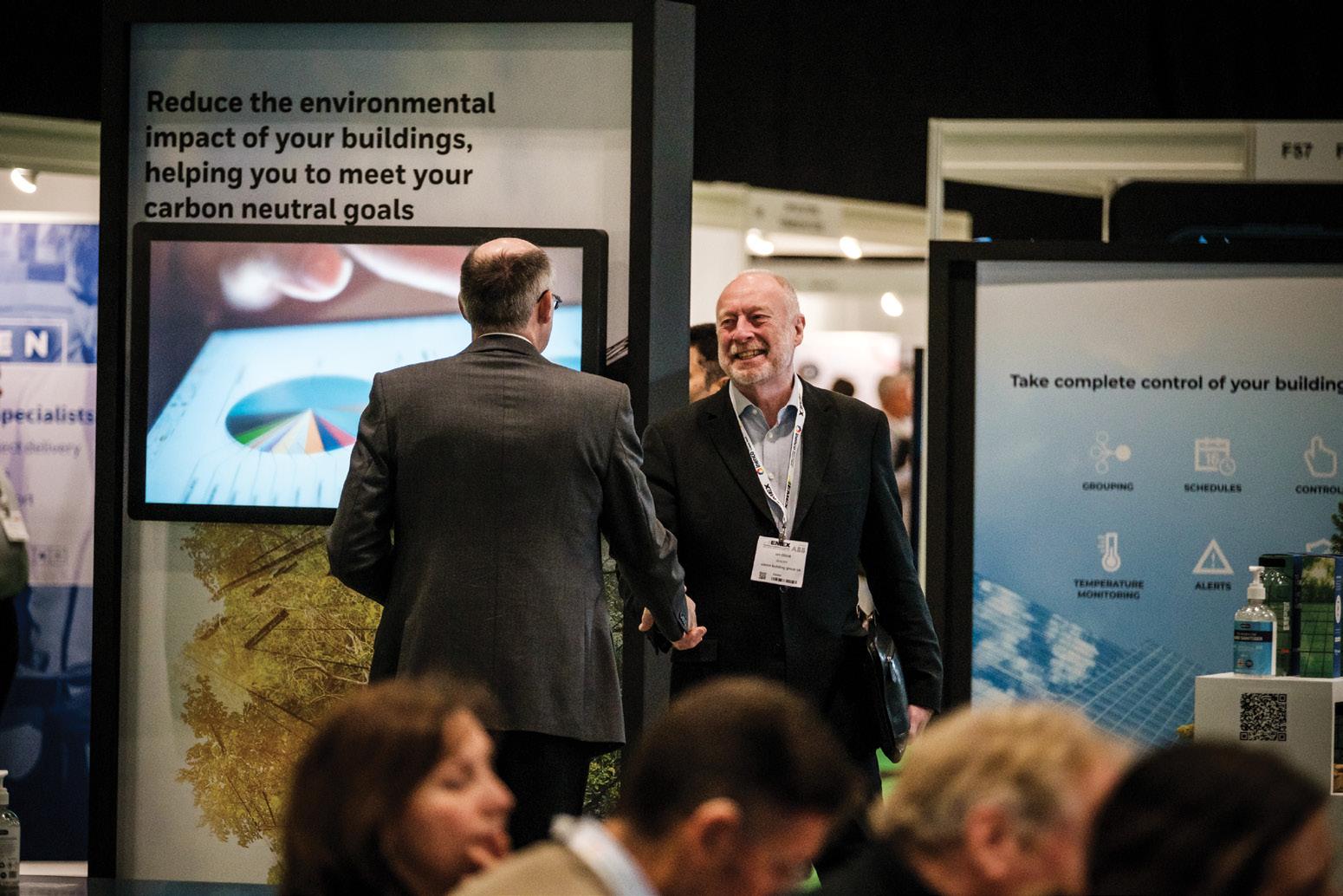
the right connections for the next twelve months over just two days!
EMEX welcomes over 4,000 visitors from the smallest companies to the largest multi-nationals, from limited budgets to those who have millions to invest in sustainability solutions and from across the wide spectrum of both the private and public sectors – there really is something for everyone who walks through the doors. Typically attracting the majority of visitors from within energy management or environment and sustainability roles, whether you’re coming to source products and equipment, conduct meetings with industry peers or acquire knowledge and best practice learnings from the educational agenda, EMEX is the place for you.
Don’t forget that registration is completely FREE and gives you access to all of these features and more. Simply visit https://emex-2023.reg.buzz/em to register your place now.
ENERGY MANAGER MAGAZINE • SEPTEMBER 2023 21 EXHIBITION NEWS
it is proud to be the largest gathering of energy managers and sustainability professionals in the UK.
TRANSLATING CARBON REDUCTION GOALS INTO DELIVERABLES FOR BUSINESS WITH STEAM SYSTEMS
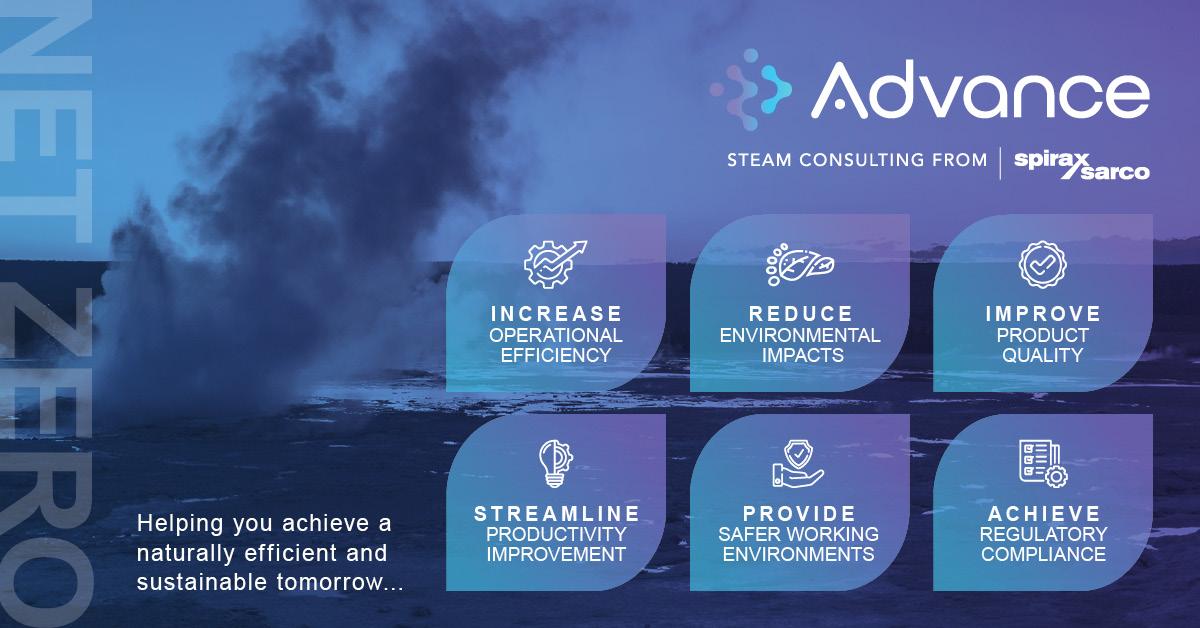
The climate crisis is one of, if not the biggest, challenges facing humanity. From increasingly extreme weather events to loss of biodiversity and rising sea levels, it has huge implications for global social, economic, and environmental systems. With time running out and scientists issuing final warnings, the fight against climate change has gained a lot of momentum across the globe. The push to reduce greenhouse gas emissions and our collective carbon footprint impacts nearly all aspects of our lives.
But with growing pressure from governments to hit net zero by 2050 and limit global warming to 1.5°C, businesses shoulder a lot of the responsibility. One of the most significant ways businesses can combat climate change is by reducing carbon emissions across Scope 1, 2, and 3 emissions:
• Scope 1: Direct emissions from owned or controlled resources
Scope 2: Indirect emissions from the generation of purchased energy
Scope 3: Indirect emissions
not covered in Scope 2.
But reducing carbon emissions isn’t easy – especially for companies that use industrial steam systems. The good news is that it’s possible to significantly reduce your carbon footprint and save money and energy at the same time. One of the best ways to do this is to set ambitious (but achievable) carbon reduction goals and translate them into operational deliverables.
At Spirax Sarco, we specialise in helping businesses to optimise their steam systems. Through optimisations and upgrades, we’ve helped countless businesses:
• Save money
• Reduce energy consumption
• Lower carbon emissions
• Hit sustainability targets This guide has everything you need to know about carbon reduction goals and your journey to net zero. It has everything from the reasons they’re essential to converting goals into deliverables.
Ready to reduce your carbon footprint?
THE NEED FOR CARBON REDUCTION TARGETS
Scientists worldwide have voiced a clear and urgent consensus that we need to make drastic changes to reduce the effects of climate change. Climate change is a substantial threat to our planet, and overwhelming evidence shows that it’s caused primarily by us. Without any action on our part, we’re likely to see significant changes in the world around us:
• More frequent and severe heat waves disrupting ecosystems and agriculture
Extensive flooding of coastal cities and displacement of millions due to rising sea levels
Collapse of coral reefs due to ocean acidification
• More intense and frequent extreme weather events
• The extinction of species that are unable to adapt
• A rise in infectious diseases, malnutrition and mental health issues.
As individuals, we can all do our bit to reduce carbon emissions and the effects of global warming. But businesses, as key contributors to carbon emissions, have a crucial role to play, and that’s where carbon reduction goals come in.
Establishing carbon reduction targets is a practical step that businesses can take to contribute to the climate effort. Your targets
serve as clear and quantifiable goals that can guide and motivate your company’s eco-initiatives. But they also help you to monitor progress and demonstrate your commitment to environmental responsibility.
But setting targets is just the first step.
To effectively reduce carbon emissions, you first need to understand where they come from and work out how to improve them. This is particularly true for businesses that rely on steam systems that can be a significant source of carbon emissions.
The good news is that steam can be clean. In the following sections, we’ll explore how you can:
• Understand and set carbon reduction goals
• Identify key areas for carbon reduction
• Translate goals into actionable deliverables for your team
• Understanding Carbon Reduction Goals

Governments around the world are acknowledging the importance of reducing carbon emissions. This has resulted in the creation of new regulations and targets for carbon reduction. On local, national and international levels, new policies are being implemented to try and reduce the effects of global warming.
The UK Government was the first major economy to pass net zero emissions laws. The new law requires
22 ENERGY MANAGER MAGAZINE • SEPTEMBER 2023 STEAM SYSTEMS
the UK to bring all greenhouse gas emissions to net zero by 2050. This new law has seen the ban on petrol and diesel vehicle sales beyond 2030 but has also brought in industryspecific goals and benchmarks.
However, these goals won’t be completed overnight. The journey to carbon neutrality is a marathon, not a sprint. Balancing the need to make changes, the external pressures and your company’s capabilities is crucial.
SETTING REALISTIC CARBON REDUCTION GOALS
Setting realistic and achievable targets that take into account the size of your company, your sector, and your resources is key to a sustainable carbon reduction strategy. The most effective strategies focus on gradual, sustainable changes rather than dramatic, unsustainable shifts.
Carbon reduction goals vary drastically depending on the size and sector of a business. But many businesses are using science-based targets. These reduction targets align with the Paris Agreement’s goals to limit global warming to less than 2°C above pre-industrial levels and pursue efforts to limit warming to 1.5°C. These targets are usually split into absolute targets and intensity targets:
• Absolute targets – A company may aim to reduce its carbon emissions by a certain amount over a specified period.
Intensity targets – A company might aim to reduce the ratio of carbon emissions to another business, usually financial metrics, such as sales or production.
Before you can set any targets, you need to understand your emissions. You can do this by conducting a carbon footprint analysis to analyse where your emissions come from. This will include Scope 1,2 and 3 emissions.
Once you have the results from your analysis, you can establish a baseline for your emissions. Your emissions baseline will be the level which you measure your progress against.
Next, you’ll need to identify opportunities to reduce your emissions which we’ll discuss in the next section. With your baseline emissions and opportunities identified, you can move on to setting your reduction targets.
For example:
• Your absolute target may be: You commit to reducing your carbon emissions by 50% by
2030 compared to 2020 levels
• Your intensity target may be: You set a goal to reduce its emissions per unit of product by 30% over five years
IDENTIFYING KEY AREAS IN STEAM SYSTEMS FOR CARBON REDUCTION
When setting goals for carbon reduction, it’s crucial to identify key areas for potential improvements. In the context of steam systems, several key areas can drastically reduce your carbon emissions quickly:
ENERGY EFFICIENCY IMPROVEMENTS

One of the best ways to reduce the carbon emissions from your steam system is to reduce the energy required to run it. This can often be achieved through better insulation, regular maintenance and improved heat recovery.
FUEL SWITCHING AND ALTERNATIVE ENERGY SOURCES
Reliance on fossil fuels is the biggest driver of climate change. Changing to cleaner sources can significantly reduce the carbon emissions from your steam systems. Integrating renewable energy sources, like solar and wind power, can reduce your reliance on fossil fuels and lower your carbon footprint significantly.
STEAM SYSTEM OPTIMISATION
Inefficient systems lead to a lot of energy wastage. You can make your whole system more efficient by improving steam trap management, automating controls, improving condensate recovery and implementing other measures. Steam has the potential to be a natural, clean technology when appropriately managed. But achieving carbon reduction goals go beyond these key areas.
TRANSLATING GOALS INTO DELIVERABLES FOR YOUR TEAM
Once you’ve established your carbon reduction goals, the next step is to translate them into deliverables for your team. Reducing your company’s carbon emissions will be a team effort, and you’ll need to include people at all levels to make effective change. There are several ways to do this:
1. Develop a carbon reduction roadmap – This roadmap should outline the steps you’ll take to meet your carbon reduction goals. It will provide you with a clear path forward and help everyone stay on track.
2. Create team-specific goals –Different teams within your company will have different roles to play in reducing carbon emissions. By setting team-specific goals, you can ensure everyone knows what they need to do and how they’re helping hit your overall target.
3. Encourage collaboration – Climate change affects us all, and we’re in it together. Foster an environment where everyone feels they can make a difference and contribute to reducing carbon emissions. You can do this with regular team meetings, brainstorming sessions and collaborative projects.
4. Monitoring and reporting progress – Set up a system for tracking your progress towards your goals. Doing this can help you to maintain your momentum. It’s also important to share this information with your team and stakeholders, as it keeps everyone informed and motivated to achieve your goals.
5. Adapt and scale – As you progress towards your goals, look for new ways to improve and innovate. If you have a strategy that works well in one area, test it to see if it will work in other areas.
HIT YOUR NET ZERO TARGETS WITH SPIRAX SARCO
The path to net zero is not a straightforward one, but the rewards will be worth it. Beyond helping to reduce the effects of global warming, companies that hit their goals also reap the benefits of a boost in corporate reputation, cost savings and customer goodwill.
Translating these high-level goals into practical, achievable team deliverables can be a complex process. But you don’t have to navigate this process alone. Our Advance consulting service is designed to help you hit your carbon reduction goals and work towards building a more sustainable future.
Are you ready to identify optimisation and upgrade opportunities to make your steam system cleaner and green? Learn more about our Advance Steam Consulting at sxscom.uk/advance and start your journey to hitting your carbon reduction goals today. www.spiraxsarco.com
23 ENERGY MANAGER MAGAZINE • SEPTEMBER 2023 STEAM SYSTEMS
SCHOOL EMBARKS ON THIRD ENERGY-SAVING CHP INSTALLATION
Prioritising more energy-efficient heating can be challenging for schools, especially when dealing with older estate. At Aldenham School in Elstree, a Baxi CHP and boiler system installed at one its boarding houses continues to successfully tick all the efficiency boxes. So much so that the School is now embarking on its third CHP installation. Baxi’s Renewables Sales Manager Mark Gibbons reports.
Eighteen months since installing a combined heat and power (CHP) and boiler system in one of its boarding houses, independent school Aldenham has reported a 35-40% fall in annual gas consumption with an additional £4,500 of on-site generated electricity going back into the building each year.
A similar CHP and boiler system installed in the plant room of a second boarding house is showing a parallel trend in total energy savings. The success of the solution is such that Aldenham’s Head of Estates Tony Albon is currently refurbishing a third boarding house plant room with a Baxi CHP system during the
summer shutdown period. A fourth CHP installation is planned for later in the year.
The School’s partnership with Baxi began a few years back, when Aldenham School first identified that the three floor-standing boilers at Paull’s House, one of its five boarding houses, were reaching end of life.

Like many independent schools, Aldenham has a stock of older existing buildings. At Paull’s House, parts of the building date back to the sixteenth century.
“We have 60 children staying at Paull’s House in the evening,” Tony explained, “so it’s essential that the building is warm and comfortable with enough hot water for showers and catering. At the same time, we wanted to reduce energy usage and emissions associated with heating. Reliability, sustainability and affordability were therefore the main considerations.”
When exploring the options, Tony looked into heat pumps as a possible solution but had to rule them out due to the building fabric at Paull’s House and the upfront cost.

“We were working with an extremely old and leaky building,” he added, “which added to the complexity of the retrofit challenge. So, we decided to call in the heat experts for advice.”

The Baxi team had lengthy discussions with Tony and Karl Mahon, the School’s Bursar, to understand the exact requirements at Paull’s House
before presenting the feasible options. This included the need to connect the new system to the neighbouring science block that was being refurbished. Multiple site visits were carried out to ensure that the proposed solution would be an energy-efficient system tailored around the needs of the buildings.
When Baxi proposed a CHP and boiler solution as the most viable solution to meet all requirements, they immediately put Tony and Karl in touch with a school using a similar system to understand how it worked and the benefits it was delivering.
“They really took the time to explain the proposed solution,” said Tony. “It was great to be able to see the CHP in situ, hear the other school’s experiences and come away with an accurate, realistic idea of the energy-saving benefits.”
“The CHP and boiler system seemed the perfect solution, meeting all our requirements,” he continued. “Once we had the go-ahead from the Governors, the Baxi team worked closely with our heating contractors, supporting them with the design and installation phases. Their engineers then carried out the pre-commissioning and final commissioning to ensure that the system worked right first time.”
The Remeha R-Gen SenerTec Dachs CHP unit provides a thermal output of up to 14.7kW and an electrical output of 5.5kWe. The unit is controlled
24 CHP ENERGY MANAGER MAGAZINE • SEPTEMBER 2023
according to the heat demand, while the internal microprocessor controller tracks the electrical output to match the thermal output.
Three Potterton Commercial Sirius three WH stainless steel boilers operate alongside the CHP to meet peak load. With a wide 9:1 modulation ratio for improved efficiency and boiler longevity, the boilers boast high gross seasonal efficiency of up to 97.3% with ultra-low NO x emissions under 24 mg/ kW to minimise environmental impact. The boilers are supplied with the latest Siemens controls and state-of-the-art PCB to enable enhanced control options.
Accurate sizing of the CHP unit was critical to maximise the energy and carbon saving benefits. A year and a half since handover, the system continues to operate trouble-free and better than anticipated.
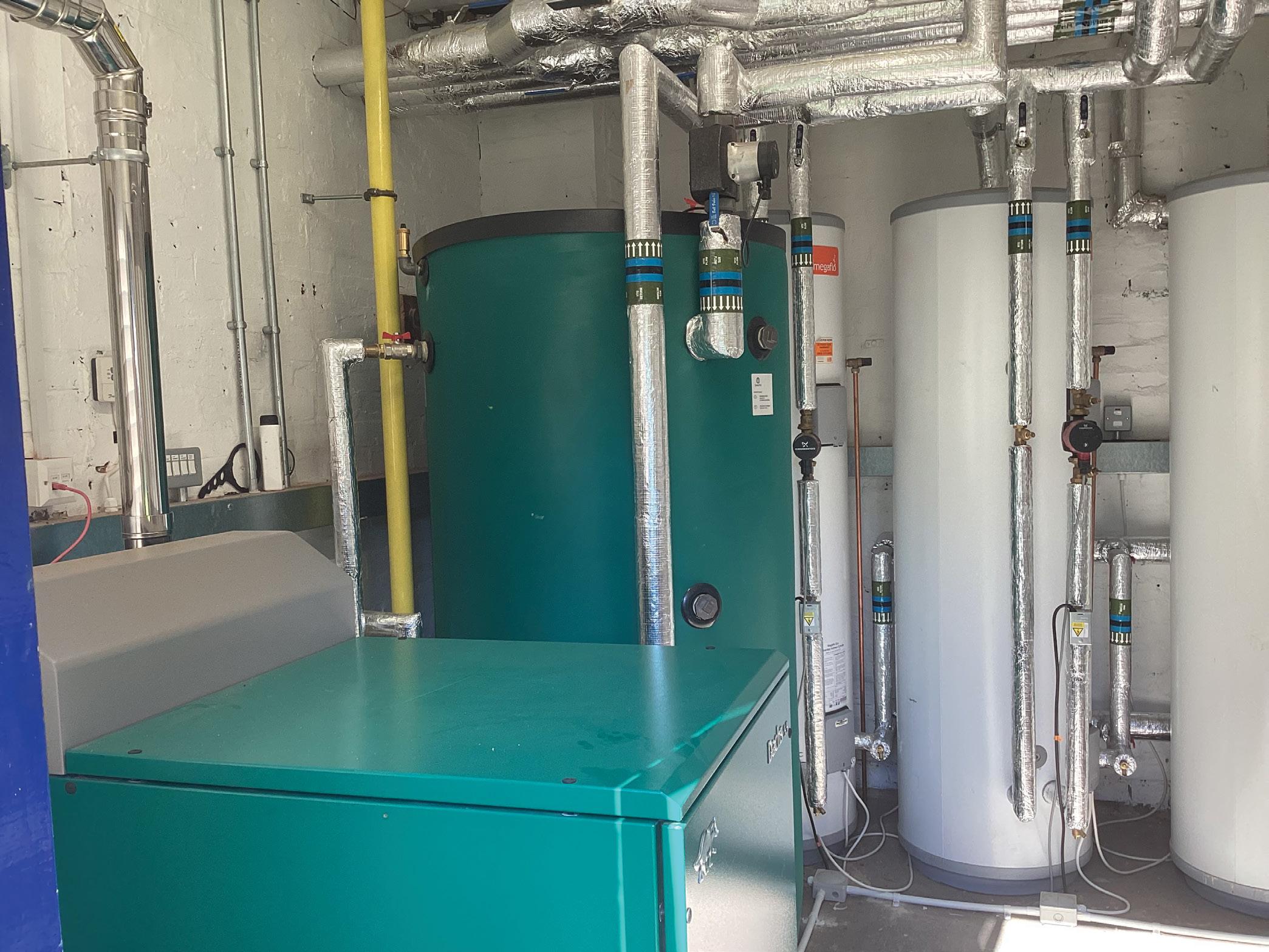
“The CHP has been running flat out, 24 hours a day, 365 days a year, improving the efficiency of the system and meeting the needs of the building all year round,” Tony said.
“We are seeing a 35-40% decrease in annual gas consumption at both Paull’s House and McGill’s with an added £4,500 of electricity being put back into the buildings each year that reduces

total energy costs still further. And the savings will only get better once the next installation is complete. We are delighted with the efficiencies of the Baxi CHP systems and how this technology is helping us reduce energy usage in
what were energy-intensive buildings.”
Remeha and Potterton Commercial are part of Baxi.
For more information on the Remeha CHP range, visit: https:// www.remeha.co.uk/products/chp

25 ENERGY MANAGER MAGAZINE • SEPTEMBER 2023 CHP THE ONLY PUBLIC SECTOR ENERGY JOURNAL To receive Energy Manager Magazine FREE of charge, please visit: energymanagermagazine.co.uk/ subscribe www.energymanagermagazine.co.uk
THE ROLE OF CHP IN THE NET ZERO ECONOMY
Simon Matthews, Projects Director, JRP Solutions

With increasing electricity prices and static, or even reducing gas prices there can be significant economic benefits from installing a new reciprocating engine CHP plant on a site that has a suitable and consistent heat load. However, the carbon reduction benefits may now be less clear cut.

Many existing CHP units are reaching the end of their planned or contracted service life or may need investment to comply with tighter NOx emission limits under the Medium Combustion Plant Directive. The economic benefits of re-lifing or replacing existing CHP plant can be very attractive, particularly if it provides an opportunity for efficiency improvements. But what would be the impact be on commitments to reduce carbon emissions?
Back in 2000, CHP was seen as a having an important role in reducing net CO2e emissions and the Government launched the CHP Quality Assurance (CHP QA) Scheme to promote and incentivise good quality CHP. The CHP QA website still states:
“The CHP Quality Assurance programme (CHPQA) is a government initiative providing a practical, determinate method for assessing all types and sizes of Combined Heat and Power (CHP) schemes throughout the UK. CHP, the simultaneous generation of heat and power in a single process, provides one of the most cost-effective approaches for making carbon savings and plays a crucial role in the UK Climate Change programme.”
However, CO2e emissions from UK electricity have reduced from 0.48531 kg CO2e/kWh in 2010 to 0.19338 kg CO2e/ kWh in 2022, whereas the emission factor for natural gas has remained at 0.18219 kg CO2e/kWh (UK Gov DBEIS). This reduction in grid emission factors diminishes the potential of CHP to reduce net CO2e emissions.
Conversely the economic case for CHP has improved dramatically due to a much greater increase in electricity prices compared to natural gas prices (the ‘spark spread’). A site that paid 6.5 p/kWh for electricity and 2.0 p/kWh for gas in 2010 may be paying 20 p/kWh for electricity and 9. p/kWh for gas in 2022. Even a very efficient CHP unit with good utilisation could barely break even in CO2e emissions in 2020 compared to
electricity supplied from the grid and heat from a boiler, whereas there would have been a significant CO2e benefit in 2010. On the other hand, the cost benefits of operating efficient CHP plants have improved dramatically over the last 10 years due to increased grid electricity prices and gas prices. This trend seems set to continue with increased decarbonisation of UK electricity supply and an excess of gas supply over demand which would secure the economic benefits of CHP but further challenge its role in a carbon reduction strategy.
EFFICIENCY IS CRITICAL
Maximising CHP efficiency in terms of both electricity and heat delivery is essential to minimise CO2e emissions, and

26 CHP ENERGY MANAGER MAGAZINE • SEPTEMBER 2023
asks: With decarbonisation of the UK’s grid electricity supply can Combined Heat and Power (CHP) still have a role in moving towards a Net Zero economy?
also to maximise return on investment.
Whereas electrical generation efficiency is more or less assured if CHP plant is well maintained, heat efficiency depends on the ability of a site to make beneficial use of heat available from CHP plant.
Under the CHP QA scheme heat efficiency is determined by the heat metered at the CHP boundary and it is possible to achieve a good CHP Quality Index as a result of heat supplied to inefficient systems or, for example sustaining heat distribution losses. In some cases, existing CHP installations have been over-sized on the basis of sustaining these losses.
DETAILED ANALYSIS IS KEY
The key to determining the optimum capacity, specification, and configuration for a proposed new or replacement CHP installation is a detailed analysis of hour by hour electricity and heat loads over a typical 12-month period including heat demands at the point of use as well as delivery.
A rigorous approach to quantifying, profiling and characterising heat load can often identify opportunities to reduce

heat load through for example insulation, improved control, and measure to reduce heat sink temperatures enabling more efficient CHP heat delivery. Implementation of these opportunities may well reduce the optimum CHP capacity (and capital cost), and the overall holistic package of more efficient CHP and heat load reduction can provide an optimum whole site solution to reduce CO2e emissions and maximise energy cost savings and return on investment.
CHP NOT THE ONLY OPTION
Of course, CHP should not be the only option considered when considering energy supply and demand reduction strategies to minimise carbon emissions and energy costs. A rigorous approach to quantifying, characterising, and reducing heat energy requirements should be used to assess alternative options which may include, for example, ground source or air source heat pumps, biomass combustion and solar thermal etc. Like CHP, the benefits of these alternative options will often be enhanced by measures to reduce heat demands and heat sink temperatures. A comprehensive option comparison considering carbon management, cost saving, return on investment and other client criteria can still show CHP to be the best solution for many applications. In the longer term there may be more attractive solutions than CHP to minimising carbon emissions in the face of continuing de-carbonisation of the UK grid electricity and changing energy markets including the
possible development of a hydrogen economy, this may bring about commercialisation of hydrogen fuel cells and other new technologies.

The asset life and typical service agreement for CHP plants is 10 to 15 years. Reduction and optimisation of heat loads to facilitate efficient CHP operation in the medium term can provide a good foundation for these newer technologies when it comes time to move away from CHP.
JRP’s CHP specialists can work with you to determine the optimum capacity, specification, and configuration for a proposed new or replacement CHP installation. We can carry out a thorough options appraisal to minimise carbon emissions and energy costs including an assessment of alternatives. These may include ground source or air source heat pumps, biomass combustion and solar thermal etc. A comprehensive option comparison considering carbon management, cost saving, return on investment and other client criteria may still show CHP to be the best solution.
The asset life and typical service agreement for CHP plants is 10 to 15 years. If you already have a CHP system, JRP can work with you to reduce and optimise heat loads to facilitate efficient CHP operation in the medium term which can provide a good foundation for the newer technologies when it comes time to move away from CHP.
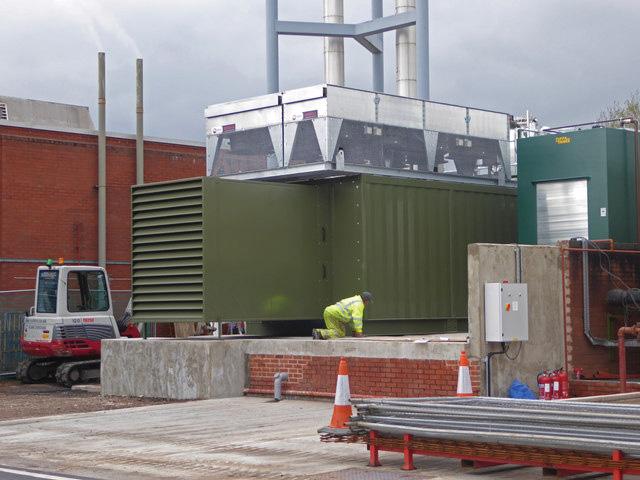
Give us a call now for more information about CHP options appraisals and optimisation: 0800 6127 567 or email george.richards@jrpsolutions.com

27 ENERGY MANAGER MAGAZINE • SEPTEMBER 2023 CHP
www.pssa.info Join us today
A wide group of people working across all areas of the Public Sector – to educate, train, support and connect as we work towards a more sustainable future.
EVOLVING HEAT NETWORKS
Heat networks are one of the most cost-effective ways of delivering affordable, low carbon heat to homes and organisations in high heat density areas. In simple terms, these systems traditionally operate by taking heat from a centralised heat source and distributing it throughout the network to end users via a network of underground pipes. By avoiding the need for households and workplaces to rely on individual, energy-intensive heating solutions, they can provide a versatile solution to reducing the carbon intensity of heat in buildings.
The heat source might be a facility that provides a dedicated supply to the heat network, such as heat pumps, a hydrogenfed combined heat and power plant or boiler plant, or a hybrid system with a combination of different low / zero carbon (LZC) technologies. On a larger scale, heat networks can support local regeneration as they can also use heat from otherwise inaccessible renewable and recovered heat sources from industry and urban infrastructure such as data centres or natural sources like rivers and disused mines.
Optimising, developing and expanding heat networks is vital if the UK is to successfully deliver on its building decarbonisation goals. Today, heat networks provide about 2-3% of the heat used in UK buildings, but the aim is to grow this figure to around 18% by 2050.
HEAT NETWORK ZONING
One of the ways in which the UK government aims to accelerate the growth of heat networks is by designating prime areas for developing heat network systems as heat network zones where they provide the lowest cost and most effective method for supplying and decarbonising heat1
1 https://www.gov.uk/government/publications/heatnetworks-zoning-pilot

To this end, it has launched the Heat Network Zoning Pilot Programme which is being carried out in 28 English cities and towns. Working with local authority partners and key stakeholders, the aim is to devise and test a methodology for identifying heat network zones.
Bar some exemptions, once the heat network scheme is up and running, most buildings – whether currently heated by traditional boiler plant or through communal heat networks – will be required to connect.
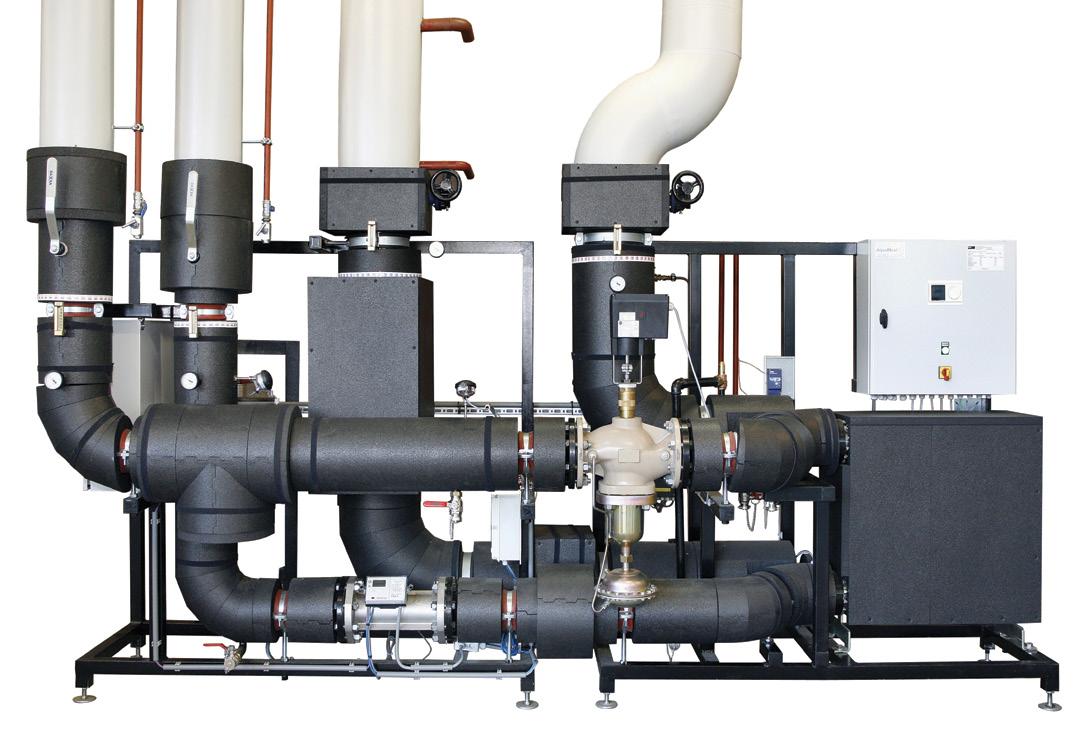
EXPANDING HEAT NETWORKS
Typically, with current heat networks, energy flows in one direction and is kept within one network. This will inevitably change. Projecting forward, as networks expand, they will link to one another directly, if temperature and pressure regimes permit, or indirectly if not. Consequently, as the networks grow and merge with one another, they will become far more valuable as more and more users connect onto them. Further, as well as interconnecting networks as they expand and converge, energy could flow both ways as systems with energy that would normally go to waste can export it onto the larger networks.
In other words, heat networks become the thermal rails, connecting different users and providing systems with surplus heat a place to export it. This could be waste heat from industrial processes or data centres or surplus heat from microgeneration systems.
NEW REGULATORY FRAMEWORK
However, for heat networks to deliver on their potential, it is essential that they are designed, maintained and regulated in such a way that they reliably deliver affordable decarbonised heat.
While at present there is no regulation in place to protect heat network customers,
the government is addressing this through the Energy Security Bill2, which is passing through parliament at the time of writing.
The Bill introduces a new regulatory framework for heat networks and the introduction of the new Heat Network Regulations which will be overseen by Ofgem. The Bill also introduces powers to enable heat network zoning to ensure reliable, efficient, low carbon heat at a fair price.
Supporting this is the Heat Network Technical Assurance Scheme (HNTAS), which aims to improve the efficiency and resilience of heat networks in the UK. Work is now underway to design and develop a scheme that will provide assurance of heat network quality and performance and demonstrate compliance with minimum technical standards.
The renewed focus on performance, which comes off the back of work carried out by BESA to upgrade the test criteria of HIUs, aims to maximise reliability for consumers. The goal is to make it possible to deliver low carbon, affordable heat to communities via these systems and provide greater assurance of efficiency. The expectation is that it will legally enforce minimum technical standards for all heat network operators from as early as 2024.
In summary, the heat networks market is set to grow rapidly with the passing of the Energy Bill. The introduction of the Heat Network Regulations, the development of heat network zones and compliance with HTNAS will ensure a minimum level of performance to benefit all customers on the network. In this win-win scenario, heat networks could deliver greater benefits for all those linked to the networks at the same time as bringing us closer to our climate goals. www.baxi.co.uk/about-us/ the-future-of-heat
2 https://www.gov.uk/government/publications/ energy-security-bill-factsheets/energy-security-billfactsheet-heat-networks-regulation-and-zoning
28 ENERGY MANAGER MAGAZINE • SEPTEMBER 2023 HEAT NETWORKS
Developing, expanding and retrofitting heat networks to heat homes and organisations is a key part of the Government’s strategy to achieve net zero. Ian Robinson, Technical Manager – Multi-Occupancy and Heat Network Solutions at Baxi, reports on the latest developments to accelerate the growth of heat networks and ensure reliable performance standards.
REACHING ENERGY RESILIENCE

emissions. This design was set to run in island mode, giving the manufacturer a complete standalone solution while a new connection was established.
Energy intense sites across the UK have wrestled with energy price rises consistently undercutting their bottom lines – creating some of the most difficult trading conditions for decades. However, with the UK government’s Energy Bills Discount Scheme set to end in March 2024 energy challenges, it seems, are here to stay.
Solving these bottom-line issues is only one piece of the puzzle. Beyond cost, there are serious questions surrounding the National Grid’s ability to cope with rising demand, with concerns around grid constraints never too far from the headlines. All this, of course, takes place in the shadow of net zero, an issue that poses its own set of problems for energy-intensive industries.
The current climate, however, should push energy managers to take bold moves to counter energy cost, availability and emissions. New energy models – which work interactively with the grid, rather than dependent on it –are set to provide energy users with the resilience and stability they require.
THE UK’S POWER NETWORK
Huge demand for grid energy has compounded the pressure on national infrastructures. Factories are already being asked to voluntarily reduce electricity usage this winter to combat grid strain1 and new sites are being put on hold due to lengthy connection delays2. For these issues, short-term solutions are understandably the first port of call.
However, the predictability of power network strains means longterm solutions must now form part of energy strategies. Failing to anticipate these grid-associated struggles mean facilities may sleepwalk into blackouts.
1 https://www.telegraph.co.uk/ business/2023/06/17/national-grid-blackoutprevention-plan-business-energy-use/ 2 https://www.telegraph.co.uk/ business/2023/02/18/electricity-grid-delays-sinkplans-new-fuel-cell-development/
BREAKING FROM THE GRID
The answer to these energy challenges seems to lie elsewhere than in the UK’s established power network. Currently, greater uptake of decentralised energy seems the most viable solution. By installing on-site generation, whether it be fully independent from, or run parallel with the grid, high-energy users can upscale during peak periods or when supply is especially unstable. Guaranteeing uptime even under unfavourable external conditions.
Energy autonomy gives sites the ability to improve security of supply, reducing transmission losses and lowering carbon emissions. It also provides an easily scalable solution should demand change in the future – something the grid can far from guarantee.
DECENTRALISATION IN PRACTICE
While many energy intense sites will already have some form of on-site generation – largely for contingencies and power cuts – the wider picture makes the case for decentralisation stronger than ever. Aggreko’s latest report, the Race to Resilience therefore highlights the ways in which sites have the best chance of securing enough power both now, and in the future.

The report gives prominence to microgrids, gas-powered generators, combined heat and power, and energy storage as decentralised solutions able to deliver enhanced energy resilience and gives practical examples of these in action.
One example is of a 12MW industrial facility in a remote location which faced energy shortfall due to shutdown of local power infrastructure. Without access to the grid, Aggreko provided a 12MWe rush diesel system to offer immediate support, with gas and battery solutions incorporated at a later date to lower the company’s fuel and
This is one instance of the bridging solutions designed to give a risk-free way of making significant progress, avoiding the complexities of an outright purchase with long payback periods and the threat of obsolescence. To give decision-makers a starting point when identifying such models, the report also highlights a series of calculators developed by Aggreko – these include the Hire Vs Buy, Grid Compare, Data Centre Power Selector and Greener Upgrades calculators. These offer the crucial first step in understanding whether there are viable alternatives for power and temperature control.
THE RACE TO RESILIENCE
Energy managers up and down the UK have shown pragmatism to be a key factor in protecting their sites. And while this has served businesses well, the predictability of new energy struggles means it is now time for a new approach to power procurement. Namely, one that goes beyond the bottom-line and counters for the critical issues in play.
To protect uptime, an adaptable approach to power will be needed. The bridging solutions we are putting forward therefore give businesses the versatility to navigate difficult terrain, alongside the independence to forge a new path towards greener, more secure energy.
While a completely decentralised energy network may still be some way off, if businesses are to become more resilient, bridging solutions will be key to driving progress in a volatile market. These technologies give businesses a credible way to test and integrate a more interactive way of working with the grid without losing sight of the bottom line or other important initiatives, such as net zero.
Download the free Race to Resilience report here: https://www. aggreko.com/en-gb/resources/ industry-report-race-to-resilience

29 ENERGY MANAGER MAGAZINE • SEPTEMBER 2023 ENERGY SUPPLY
As facilities across the UK face unprecedented energy instability, Chris Rason, Managing Director Energy Services at Aggreko Europe is calling for the diversification of energy models, to deliver a reliable and cost-effective power supply.
ACCELERATING UK ELECTRIFICATION
Significant progress has been made in shifting towards clean power in the UK, with the National Grid’s Electricity System Operator (ESO) reporting that 46 percent of Britain’s electricity came from zero carbon sources in April 2023. But as demand for clean energy grows, the UKs existing power infrastructure and one directional energy model grows evermore obsolete.


The UK has consistently broken records for its renewable energy uptake since 2020, with the Energy and Climate Intelligence Unit (ECIU) noting that British-based renewable energy sources have already overtaken gas as
our primary source of electricity, based on data taken between October 2022 and January 2023. But as demand for renewable electricity continues to grow, so does the pressure to re-evaluate our existing energy infrastructure to ensure the UK’s grid can provide a reliable network which is capable of keeping up with supply and demand.
SMART SOLUTIONS

As it stands, grid constraints –coupled with a lack of investment in transmission capacity and grid modernisation – means the UK is producing more electricity from wind power than it can use. Consequently, the National Grid has introduced
curtailment costs, through which wind generators are paid to switch off rather than overload the grid at times of high wind speed. Energy tech company Axle Energy reported that £215 million was paid to wind generators to power down turbines in 2022 and a further £717m was spent on switching on gas turbines nearer to demand.
As rapid investment in wind capacity continues to soar, the National Grid ESO warns that annual constraint costs could rise to as much as £2.5 billion over the next decade before the necessary upgrades to the grid are put in place – costs that will likely be added to UK consumer bills.
30 ENERGY MANAGER MAGAZINE • SEPTEMBER 2023
RENEWABLE ENERGY
A flexible, forward-thinking approach must be taken to accommodate the UKs unprecedented soar in demand for renewable electricity, shares Suzanna Lashford, Manager of Business Development at Vattenfall Networks.
THE BENEFIT OF BATTERIES
In areas with weak supply, large batteries can be used to increase capacity at peak times to reduce curtailment costs (for shutting down wind turbines) and to avoid expensive grid expansion. A prime example is a project currently being spearheaded by Vattenfall Networks in Upsala, Sweden. Here, the energy and infrastructure specialist is supporting
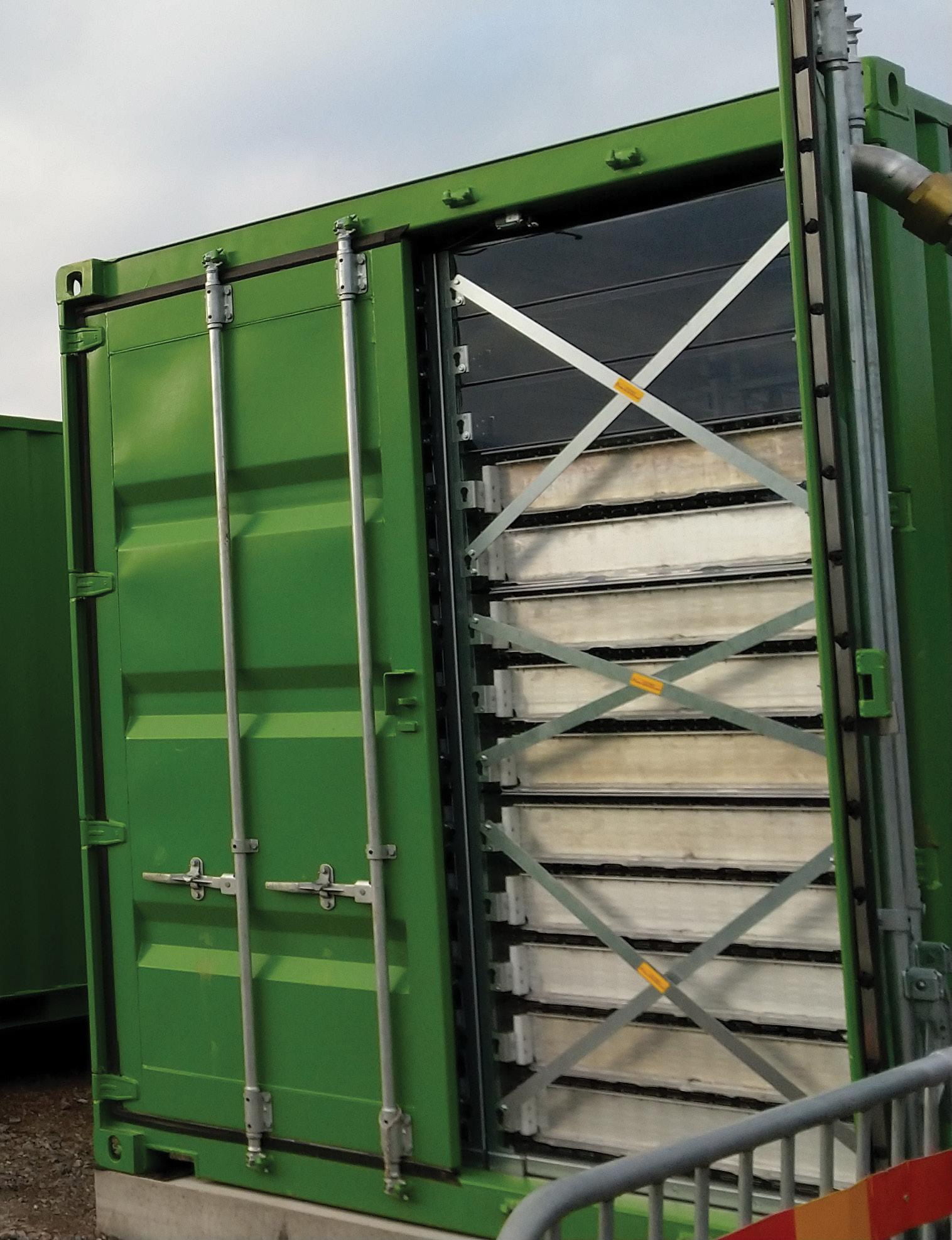
the development of what will be the Nordic region’s largest battery storage facility, with an area equivalent to about half a football pitch, and the capacity to power Uppsala municipality’s entire street lighting system. The facility is a gigantic “power bank”, which can be charged up when there is no demand for electricity and discharged when there is a high level of demand.

Another idea to increase investment and speed up the development of the UK’s grid could be to enable IDNOs
(Independent Distribution Network Operators) to take on more on some of the ‘non-contestable works’ which are currently only able to be performed by Distribution Network Operators. This would reduce pressure on the DNOs allowing them to focus more on upgrading weak spots in their networks.
UKPN’s RIIO-ED2 business plan states:
“We have seen a significant volume of connections work, delivered increasingly, by Independent Connection Provider’s (ICPs) and IDNOs. But we believe we need to go further, and our customers agree. Facilitating a competitive connections market and the drive towards Net Zero are two strategic goals which support one another.” So, there is definitely interest from the DNOs in using IDNOs and ICPs to support upgrading the UK’s grid.

WHAT CAN BUSINESSES DO NOW?
If your business is likely to need more electrical power over the next few decades to meet net zero or electrification goals, then partnering with an IDNO to upgrade your grid connection makes obvious sense. These Ofgem regulated and customerfocused businesses work alongside ICP’s to reserve grid capacity for free on behalf of their clients. IDNO’s also contribute to the costs of designing and building an electrical network through an Asset Adoption Value (AAV) payment, which can significantly reduce the developer’s total capital cost.
If your business uses large amounts of power, partnering with an energy company like Vattenfall Networks, who will fund an upgrade of your Private Wire Network, can offer further benefits and increased energy security. Electric vehicle charging, local power generation (e.g., rooftop solar panels) and battery storage systems can all be funded and integrated into micro grids, enabling industrial customers to manage their consumption more flexibly and reduce costs.
Combined with recent reforms set out by the National Grid to help shorten delays in securing a grid connection, the above steps will be central to ensuring the UK achieves its target of decarbonising the country’s power system in time for its ambitious 2035 deadline. https://idno.vattenfall.co.uk/
31 ENERGY MANAGER MAGAZINE • SEPTEMBER 2023 RENEWABLE ENERGY
ENERGY FROM THE OCEAN CAN FREE TROPICAL ISLANDS FROM FOSSIL FUELS
company Global OTEC has developed the First-Of-A-Kind 1.5MW OTEC platform, already set to be installed on the African island of São Tomé and Príncipe, in the Gulf of Guinea, by 2025. Named Dominique, the structure has been awarded recently an Approval in Principle (AiP) by Lloyds Register, and acknowledgement that the platform can meet the necessary requirements for providing a structural basis for the OTEC technology.

Earlier this year, the company also achieved its first Certificate of Approval, from the Marine Warranty Surveyor company ABL Group for the methodology of installation of a Cold-Water Riser. This approval was particularly important given the technical challenges faced by OTEC installations in the past, and the long history of OTEC’s unsuccessful implementations, meaning the Global OTEC’s technology can overcome these challenges.
With a population of over 600 million people, tropical island nations are in a difficult position when it comes to electricity. Stuck with outdated generation powered by fossil fuels, these countries are subjected to high import costs, delays and interruptions, which results in an insecure energy system. And considering that tropical islands are among the most vulnerable to climate change, particularly to severe weather such as storms, hurricanes and natural phenomena like El Niño, the transition to renewable, cheaper and more reliable sources of power is more than urgent.
Extracting clean energy from the ocean, which is their largest natural resource, is a great pathway for the islands’ renewable transition. The 60 million square kilometres that comprise the tropical area of the ocean present a significant temperature difference between surface and sub-surface layers. And when warm surface seawater and cold deep water reach a contrast of at least 20°C, Ocean Thermal Energy Conversion (OTEC) becomes suitable. Just to have an idea of the potential that OTEC has, in one single day the tropical area of the ocean absorbs one quadrillion megajoules of solar energy, that is not being harnessed. To release the same amount of energy through fossil fuels, 170 billion barrels of oil would need to be burned, a high economic cost and even bigger for our environment.
OTEC can decrease energy charges and stabilise the price of electricity, reducing the frequency of blackouts and preventing economic shocks from political events while helping islands meet the UN’s Sustainable Development Goals (SDGs). OTEC can also provide baseload power, which is the minimum amount of electricity that a power grid must have at all times. This is extremely important for tropical islands, which often have a high demand for electricity during the day. And all of this with zero CO2 emissions.
While other clean energy sources require the use of the scarce land of islands and depend on adequate weather to operate, OTEC is based offshore and can generate electricity 24/7, as the surface seawater remains warm day and night, all year round. Also, every 1 MW of OTEC installed generates the equivalent of 5 MW of solar power or 10 MW of wind power.
With projects around the world that have proven the concept, OTEC is now advancing to the commercial scale. The UK-based

Dominique is the starting point for a renewable transition that will allow tropical islands to access clean, cheaper and more reliable electricity. There are over 100 territories around the world with access to ocean waters where the technology can work. “Our first of a kind is a significant step towards unlocking the 8,000 GW of OTEC technical resource which has been identified”, highlights Dan Grech, Founder and CEO at Global OTEC.
HOW DOES OTEC WORK?
1. The barge draws in warm surface seawater (of around 26°C) which has been heated by the sun’s rays
2. This warm water is used to evaporate a working fluid with a low boiling point
3. This produces a vapour which spins a turbine to produce electricity using a generator
4. At the same time, cold deep water (of around 4°C) is drawn up through a pipe from the depths of the ocean
5. The cold water cools the vapour, turning it back into a liquid which can then be immediately reused
6. The cycle runs continuously whilst the power generated is transmitted to the grid using a sub-sea cable.
https://globalotec.co/

32 RENEWABLE ENERGY ENERGY MANAGER MAGAZINE • SEPTEMBER 2023
TINY PARTICLES WITH A BIG PART TO PLAY IN ENERGY & CARBON REDUCTION
There’s a revolution taking place in the energy saving sector that has the potential to deliver huge energy and carbon savings thanks to clever tech harnessing the power of some of the smallest structures on earth.
Nanoparticles are an already established technology delivering benefits in a variety of fields, from paints to glass, aerospace to medicine. Their use isn’t new within heating applications but fresh thinking and scientific advancements mean these tiny particles now hold the power to deliver substantial carbon and energy savings for heating and cooling systems which use water as their primary heat transfer fluid.
Think data centres, hospitals, schools, accommodation blocks, public buildings, care homes, swimming pools, even ice rinks, commercial greenhouses and social housing; the use of nano-tech heat transfer fluid – as a direct replacement for water and inhibitor in heating and cooling systems – speaks to net zero strategies, decarbonisation targets, legislative drivers, reputational benefits, CSR ambitions, fuel poverty and the overall management of energy bills.
This fresh approach makes savings of between 20% and 35% achievable on energy usage and carbon emissions, and all from a heat transfer fluid that simply replaces water within hydronic HVAC systems. The technology is backed by sound scientific principles and evidence supported by worldwide installations that have, in some cases, returned almost 50% energy savings. The approach is compatible with most HVAC systems and no major plant or system changes are required.

HOW DOES IT WORK?
Nano-particles are tiny, with many millions suspended in a stable state within the heat transfer fluid. It’s an accepted scientific principle that material properties change as their size approaches the atomic scale, with surface area to volume ratio increasing. A cup of nano particles offers roughly the same surface area as almost two football pitches. Increased surface area equals increased heat transfer capability and heating/ cooling systems work more quickly and efficiently. Put simply, spaces reach the
desired temperature more quickly. Because HVAC cycling and plant runtime is reduced, equipment lifespan is increased and maintenance requirements lessened, all adding to costs savings. Furthermore, we’ve had instances where installing nano-tech heat transfer fluid has increased the heating/cooling capacity of existing plant sufficiently to avoid capital investment in new plant to cope with increased demand.
NON-NEWTONIAN
Nano-tech heat transfer fluid is non-Newtonian and the standard rules, guidelines and laws of physics governing water do not apply. Its viscosity reduces under shear stress and there are, as yet, no standardised tests to measure its efficacy for moving heat. The fluid breaks the rules in a positive way, delivering results unachievable with water alone and offering building owners and managers a straight-forward way to improve energy efficiency, save on bills and cost-effectively reduce greenhouse gas emissions.
INSTALLATION
There are two key elements of installation – assessing system volume and ensuring it is clean (which usually means flushing to remove sludge and inhibitors. This process can also help ascertain volume if unknown). The heating/cooling system needs to be in reasonable condition with no history of leaks. Remedial work required, for example the fitting of thermostats radiator valves, should be carried out prior to installation to ensure increased heat output can be managed. Boiler sequencing/thermostats will also need adjusting accordingly. The nano-tech heat transfer fluid protects against calcification, corrosion, freezing, bacteria and algae growth so no additional inhibitor is required.
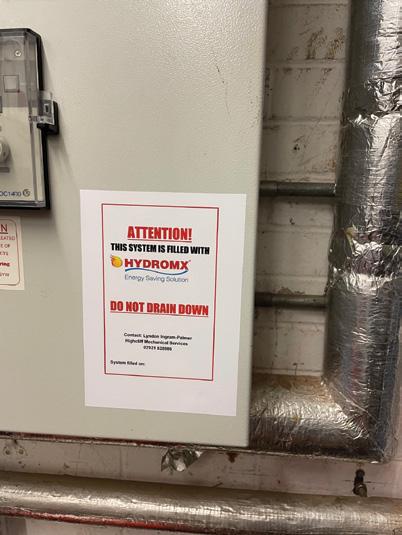
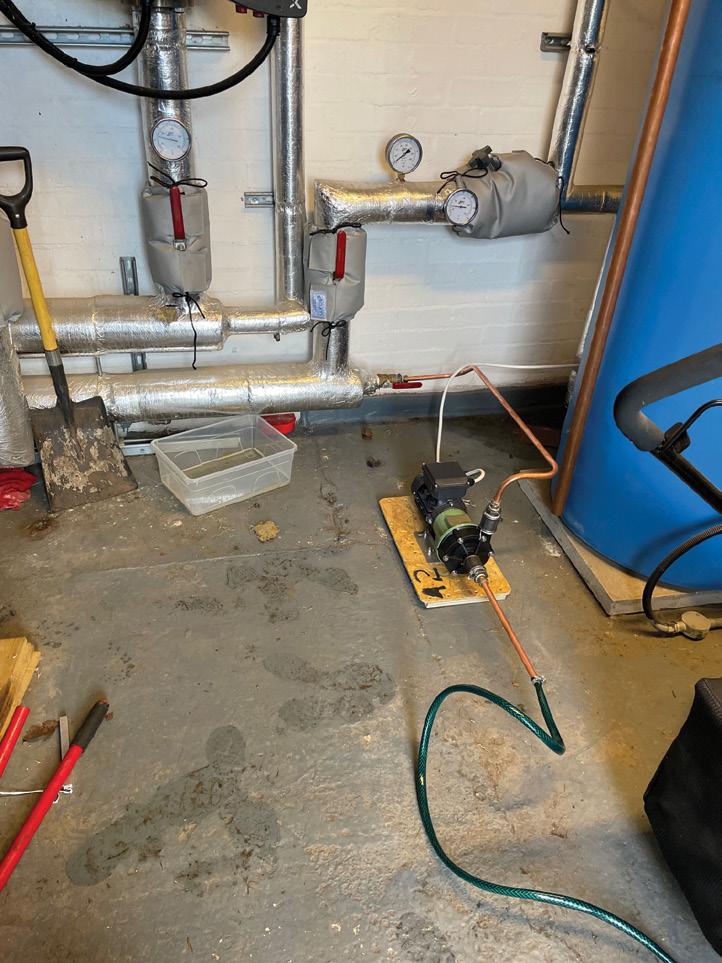
RESULTS
Nano-tech heat transfer solution Hydromx was installed into five schools in Essex as part of a pilot project by the Chelmsford Diocese, which is working towards Net Zero. Of the five, three recorded before and after energy usage statistics revealing gas consumption savings of between 37.5% and 47% from November 2022 to January 2023 when
compared to the previous year (with an HDD –Heating Degree Day – calculation applied). ROI ranges from 1.42 years to 2.18 years. It should be noted that the schools now have TRVs fitted to ensure optimum savings and, coupled with the Hydromx installation, there has been a significant focus on energy saving within each, leading to these outstanding results, including the reduction in carbon emissions of around seven tonnes per site.
So effective was the installation in to one school that TRVs had to be retrofitted throughout to manage the increased heat output. “Everyone was sweltering and every classroom had its windows open. It really has made a big difference,” said a school spokesman. As well as fitting TRVs, the school’s boiler sequencing and timing required adjusting to reflect the system’s improved efficiency, all of which resulted in savings of 47% being achieved. The headmaster reported that the school ‘felt hot rather than lukewarm’, with comfortable heating levels achieved in areas that had previously been hard to keep warm. www.hmxuk.com
33 ENERGY MANAGER MAGAZINE • SEPTEMBER 2023 HEATING
THE BENEFITS OF IMPACT INVESTING FOR BUSINESSES AND THE ENVIRONMENT
Laimonas Noreika, CEO and Co-Founder of HeavyFinance

Impact investments offer both financial returns and environmental benefits through their focus on doing social good with private capital. This type of investing has long been appealing to established financiers, but is becoming more popular with all types of investors across the board. It is gaining attention as an exciting way to turn profits while helping the world become a more sustainable place.
In 2015, the United Nations (UN) proposed 17 Sustainable Development Goals (SDG), hoping to create a more prosperous, sustainable future by 2030. It is estimated that developing countries are experiencing a whopping four trillion-dollar investment gap that needs to be filled in order to meet SDGs. The gap extends beyond the abilities of government investment spending and needs to be closed by private equity.
WHAT IS UNIQUE ABOUT IMPACT INVESTING?
Impact investing has the unique characteristic of being modifiable to fit any business’ financial situation and goal. Any sized investment has the potential to drive financial returns and create positive social change. It also helps meet the challenges brought on by the COVID-19 pandemic. Investors are developing strategies for impact in public markets and researching how to merge social and environmental impact into the very fabric of the investment process.
HOW IMPACT INVESTING BENEFITS BUSINESSES
Impact investments are also thought to be less volatile to market changes, making them a great way to diversify an investment portfolio with lower risk. The nature of these investments also prioritises social, environmental, and health benefits. In this way, impact investing is also a great way to contribute to a company’s corporate social responsibility. This makes impact investment a great alternative to donating; the ROI potential is limitless.
Impact investing can be as small as needed, and often help grow various sectors such as social, health, or environmentalbased companies in a sustainable way. This puts company values and company goals
together in a positive way; the need to grow is not at odds with the desire to do good.
HOW IMPACT INVESTING BENEFITS THE ENVIRONMENT

Impact investing has the potential to tackle some of the world’s most pressing issues; climate change, poverty, and gender equality. By investing in organisations and projects that focus on social and environmental improvement, impact investing works towards a better future.
More specifically, green investing is a type of impact investing that supports environmentally friendly organisations. This can include businesses developing eco-friendly products or innovation centres working on the next way to produce clean energy. Not only does this type of investment provide financial returns, but it also helps advance the UN’s Sustainable Development Goals (SDGs).
For example, SDG number seven, Affordable and Clean Energy, aims to ensure access to affordable and reliable energy around the world. Investing in innovation centres or tech startups dedicated to researching and developing clean energy alternatives is a crucial way to enhance the SDGs.
Impact investments made into companies developing sustainable practices also help tackle SDG number 11, Sustainable Cities and Communities, which aspires to create career and business opportunities while building resilient societies and economies. For example, investments in agriculture
can help empower a farmer from a lower economic background by enhancing his business operations and help excel the economy in developing countries.

BEST PRACTICES FOR GETTING STARTED WITH IMPACT INVESTING
Getting started with impact investing can seem overwhelming as there are so many options to choose from and the question of whether an investment will actually result in positive change is common.
Firstly, it is imperative to examine a company’s financial goals and ability to handle risk. Impact investing is flexible, making it a great option for all business sizes.
Secondly, understanding company values ensures that impact investments coordinate with company goals. This is what makes impact investing so great; investments can be chosen with more than just profit in mind.
Finally, it is important to make datadriven decisions. This begins with proper data collection and management that aligns with stakeholder goals and practices.
Impact investing is becoming more popular every year. Changing the culture around investing to reflect the desire to create positive change as well as turn a profit can help bring impact investing to the forefront of investor’s minds. With the help of private equity investments, SDGs can be met and the future can be a more inclusive, healthy, and sustainable place. https://heavyfinance.com/
34 ENERGY FINANCE ENERGY MANAGER MAGAZINE • SEPTEMBER 2023
LEEDS CITY COLLEGE EMBRACING SUSTAINABILITY IN EDUCATION FACILITIES
In today’s rapidly evolving world, the education sector faces a pressing need to embrace sustainability as a core principle. With growing environmental concerns and the urgency to address climate change, educational institutions hold a unique position of responsibility.
Applying sustainable practises into learning environments is a great way to start inspiring students to become environmentally conscious leaders – it’s time to start investing in our futures!
With that, here’s what Leeds City College did to promote sustainability within their building.
THE CONSTRUCTION PROCESS
Leeds City College needed a permanent solution to accommodate for the growing number of applicants reaching out to them. It was decided that a modular facility would be made, built offsite and then later brought onto the campus.
Modular construction plays a crucial role in enhancing sustainability, it’s an approach that revolutionises the traditional building process by prefabricating components in a controlled factory setting. This ensures faster construction times and increased efficiency. In traditional construction excess materials often end up in landfills, which are a major source of environmental pollution. Reduced construction waste is a massive contributing factor to the significant sustainability benefits of going modular. Constructing in a factory setting means precise measurements, accurate material usage, and overall minimal waste generation.
The speed of the modular process naturally means that construction machinery and equipment gives off fewer emissions. Modular construction is the more eco-friendlier method, other schools would benefit from following in Leeds City College’s footsteps.
RENEWABLE ENERGY
In order to power this modular building economically, photovoltaic (PV) panels were installed onto the roof of the facility.
PV technology harnesses the power of sunlight to generate clean and renewable electricity, proving itself invaluable to buildings seeking to reduce environmental impact. By installing
these panels educational institutions can tap into the abundant solar energy.
For Leeds City College PV was the perfect solution for enhancing their sustainability efforts whilst lowering costs of energy. The new-build modular facility was constructed to keep up with a growing number of applicants and to ensure that the campus could stay current with developments in technology.
The incorporation of PV panels seamlessly aligns with these goals, enabling the college to harness the advantages of sustainable energy while ensuring its campus remains at the forefront of progress and sustainability.
EV CHARGING STATIONS
In its pursuit of environmental awareness, the college installed six electric vehicle (EV) charging points in the car park below its premises. This strategic move ensures that the campus remains equipped to meet the evolving needs of electric vehicle users. By incorporating all the necessary ductwork during the installation process, the college lays the groundwork for seamlessly adding more EV charging points in the future, without the need for disruptive excavation.
As electric vehicles become more prevalent in the years to come, the college’s foresight ensures that it can continue supporting electric mobility without costly and environmentally taxing retrofits. By providing convenient and accessible EV charging infrastructure, the college sets an inspiring example
for students, staff, and visitors.
The presence of EV points not only facilitates sustainable transportation choices but also fosters a culture of environmental consciousness throughout the campus.
ENERGY EFFICIENT HEATING & COOLING

Another way Leeds City College embraced sustainability is by implementing air source heat pumps. Air source heat pumps heat both the facility and water in the building, making it fully electric.
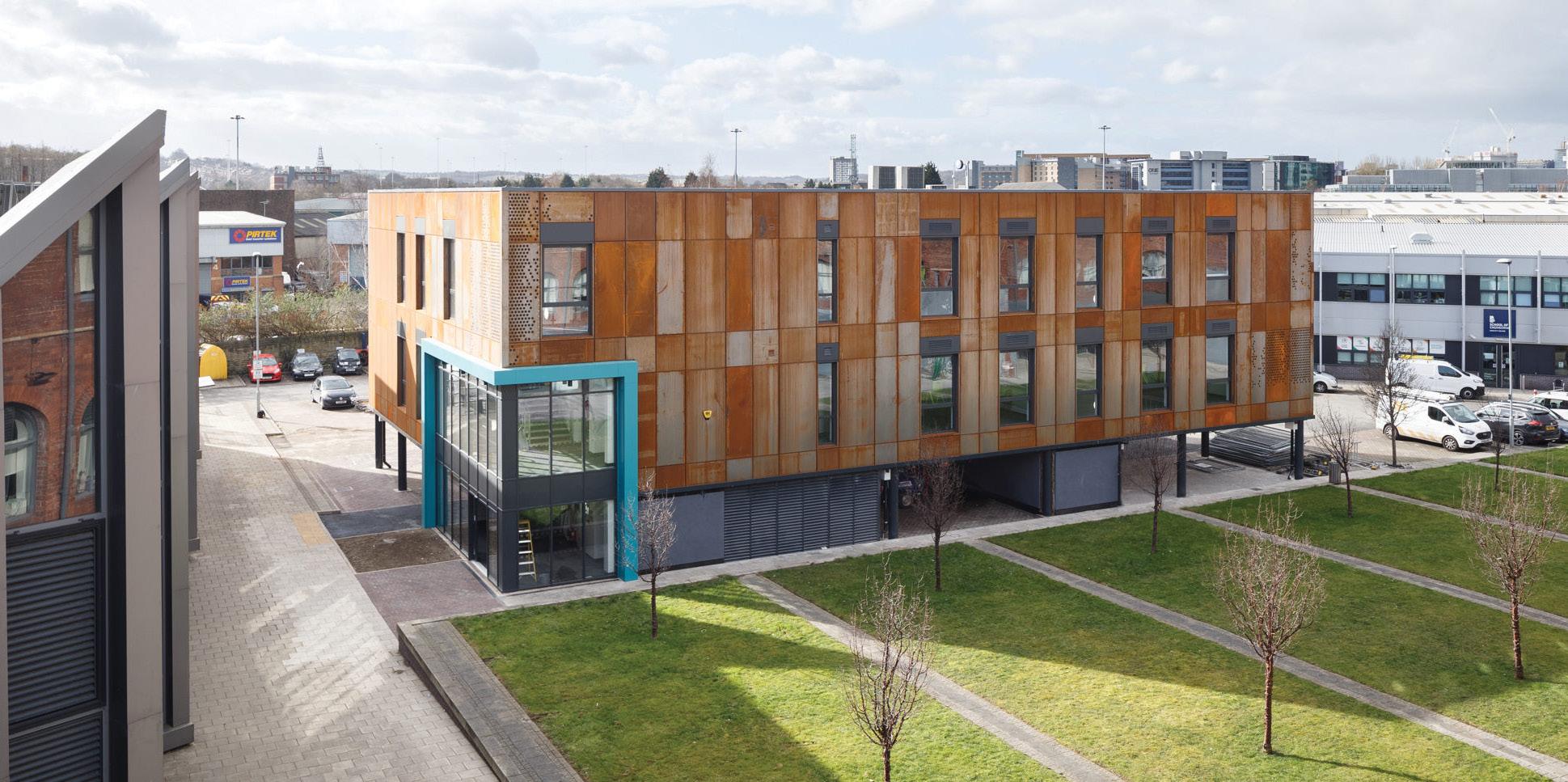
Heat pumps work by absorbing heat from the outside air and transferring it indoors, even in chilly weather conditions. By utilising this renewable energy source, the college reduces its reliance on conventional heating systems that typically use fossil fuels, leading to a significant reduction in carbon emissions and overall environmental impact.
These systems operate at a fraction of the energy consumption compared to traditional heating systems, resulting in reduced utility bills and long-term financial savings. The cost-effectiveness of air source heat pumps makes them a viable choice for many educational institutions.
By following Leeds City College’s example and adopting innovative and eco-friendly practices, educational facilities can pave the way for a greener future for generations to come. You can find out more about the full project here.
It’s time for the education sector to rise to the challenge and lead the way towards a more sustainable world.
www.premiermodular.co.uk
35 ENERGY MANAGER MAGAZINE • SEPTEMBER 2023
SUSTAINABLE CONSTRUCTION
MANAGING THE COMPLEX ENERGY DEMANDS OF THE WATER INDUSTRY FOR COST SAVINGS AND SUSTAINABILITY

The water industry accounts for around 3% of the country’s energy demand. Rises in energy costs and energy market volatility that looks set to continue for the foreseeable future, combined with media attention and public pressure to improve environmental performance, make it clear that the sector must balance shortterm issues of cost and sustainability with longer-term strategies to answer these challenges and futureproof water infrastructure and supply.
Water companies in England have
pledged to reach Net Zero operational emissions by 2030, with companies in Scotland and Wales committed to carbon neutrality by 2040. As the fourth most energy intensive sector, reduction in carbon emissions across the water industry would represent a major achievement as part of the UK’s overall Net Zero ambitions. At the same time, where energy accounts for around 20% of operating costs for water companies, there is a strong business case for decarbonisation and energy efficiency – both reputationally and financially.
In their white paper, Water 20501, Water UK highlight the business benefits of a focus on sustainability, to address the additional challenges of energy security and cost. “Increasing operational resilience by deploying renewables –solar and wind generation, coupled with battery storage makes our sites more resilient when power grids fail, meaning water customers remain in supply, and
1 https://www.water.org.uk/sites/default/files/ wp/2022/06/Water-UK-Water-2050-A-WhitePaper-3.pdf
grid operators can focus their attention on other priorities such as asset health. Deploying more of these systems would also protect customers from energy price shocks, as more of the sector’s power would come from our own sources, reducing the link with fossil fuel pricing.”
As the trade association representing British water companies, Water UK are unambiguous in their stance on this balance between costs and sustainability, “Water companies are committed to protecting customer bills by taking a ‘least cost’ approach to decarbonisation that maximises opportunities to generate new income or improve efficiency.”2


They specifically reference the
2 https://www.water.org.uk/protectingenvironment/climate-change

36 MICROGRIDS ENERGY MANAGER MAGAZINE • SEPTEMBER 2023
As one of the most energy intensive sectors, water utilities face three significant challenges: volatile energy costs, security of power supply, and carbon reduction commitments. Solon Mardapittas, CEO at Powerstar, considers the issues facing water companies and the energy management technologies that can achieve cost savings, power resilience, and sustainability - working for an affordable, secure, and clean UK water supply.
role of deploying on-site renewables in reducing the carbon intensity of operations and infrastructure: working on an energy neutral basis, while exporting clean energy to the Grid. Crucially, the business imperatives as represented by Water UK chime with the regulators’ ethos, where the Net Zero Technology Review3 for Ofwat examines the decarbonisation hierarchy, concluding, “Reducing consumption of electricity in the first place is always at the top of this hierarchy. Where electricity use cannot be avoided there should be preference for onsite, behind the meter renewables to materially reduce grid electricity imports with demonstrably additional renewable electricity.”
Focusing on behind-the-meter energy technologies is clearly a win-win for utilities and, given the high energy usage in the water sector, it’s not surprising that Battery Energy Storage Solutions (BESS) are highlighted by sector bodies as a solution to help address the three critical issues: security of supply, affordable energy, and sustainability. Most importantly, for energy security, with a BESS that offers the Uninterrupted Power Supply (UPS) needed in case of any disruption to the Grid, it will ensure operations can continue until either Grid supply resumes or, in the case of longer power outages, until back-up generators can be brought on-stream. Where a water company invests in on-site renewables, a BESS will store energy generated on-site for use when most needed. For a 24/7 operation, this enables the optimum usage of on-site renewable energy alongside the use of Grid power. And, to further reduce costs and cut carbon emissions, Grid supply can be drawn down and stored in the battery when generation
3 https://www.ofwat.gov.uk/wp-content/ uploads/2022/08/Net_Zero_Technology_ Review.pdf

is most sustainable and cheapest, for use on-site when Grid energy is at peak cost / peak carbon emissions.

BESS technology ensures that any water company maximises any on-site renewables but, when combined with intelligent energy management and monitoring software – as part of a smart microgrid – there is significant further potential for savings, on energy bills and on emissions. Looking at technology as an enabler in the utility sector – smart grids, maximising renewables in a stable and secure on-site environment, combined with AI-driven energy management data – there are opportunities to achieve the combined demands of cost savings alongside Net Zero ambitions.
For these twin goals to be met, energy intelligence – real-time data, and the capacity to inform and implement energy management goals – is critical. With a BESS installed as a central part of a microgrid, the site can function in island mode, offering the resilience that is critical for water companies in the event of disruption to Grid supply. Intelligent energy management software – the control system – enables the optimum management of renewable energy generated on-site alongside that purchased from the Grid, using advanced algorithms and machine learning techniques to forecast demand and manage the different power sources, seamlessly switching from local to centralised power supply. In their white paper, Water 2050, Water UK highlight the opportunities that innovation must play in meeting the challenges facing the sector.
“With advancements in big data, AI and machine learning, we will be able to unlock valuable insights from this data to help optimise operations and investment, and manage risk.”
Harnessing data through modern energy management software makes for greater energy efficiency, allowing water companies to identify areas of improvement and potential failure points for better asset management and maintenance planning, while also identifying where loads can be shifted to reduce peak time costs. Where companies are looking to switch to Electric Vehicle (EV) fleets, a microgrid can be an invaluable asset, as high-demand charging may place too much stress on the distribution network and potentially be rejected by the Distribution Network Operator (DNO). Here, the capability to manage EV charging through energy generated on-site together with Grid supply stored in the BESS avoids such pitfalls –helping to further sustainability goals. Ultimately, both the water industry and Ofwat have two clear priorities: delivering environmental impact with greater efficiency, and meeting customer demand for clean, reliable, and affordable water supply. Leveraging local energy sources – onsite renewable energy – with Battery Energy Storage and a smart microgrid with intelligent energy management software, is a compelling solution. As a sector with high energy usage where sites will always have complex energy flows, innovative energy management technology can meet the challenges of reliable, sustainable, and affordable power, helping water companies to deliver on these critical priorities.
To find out more about Powerstar’s cutting-edge technologies and market-leading expertise, contact us: www.powerstar.com

37 ENERGY MANAGER MAGAZINE • SEPTEMBER 2023 MICROGRIDS
Microgrid Control System
Control Panel


38 TRAINING ENERGY MANAGER MAGAZINE • SEPTEMBER 2023 Join Marta, one of the Renewable Energy Institute’s leading experts, in the Live Virtual Classroom as she delivers our Carbon Finance Consultant Expert Certificate. Marta will guide you through content covering methods to improve your green credentials with carbon reduction leading to net-zero, the different types of carbon capture and storage technologies available plus the steps required to develop carbon capture projects and the parties involved. Our Carbon Finance Consultant Expert Certificate provides you with the opportunity to study 3 courses: Carbon Finance, Carbon Capture and Storage and Renewable Energy Management and Finance. Are you ready to make a difference in the world of finance while combating climate change? For more information, call us on +44 131 446 9479 or email us at training@renewableinstitute.org Visit our website at https://www.renewableinstitute.org/training/carbon-financeconsultant-expert-certificate/ for detailed course insights
...RELY ON POWERSTAR









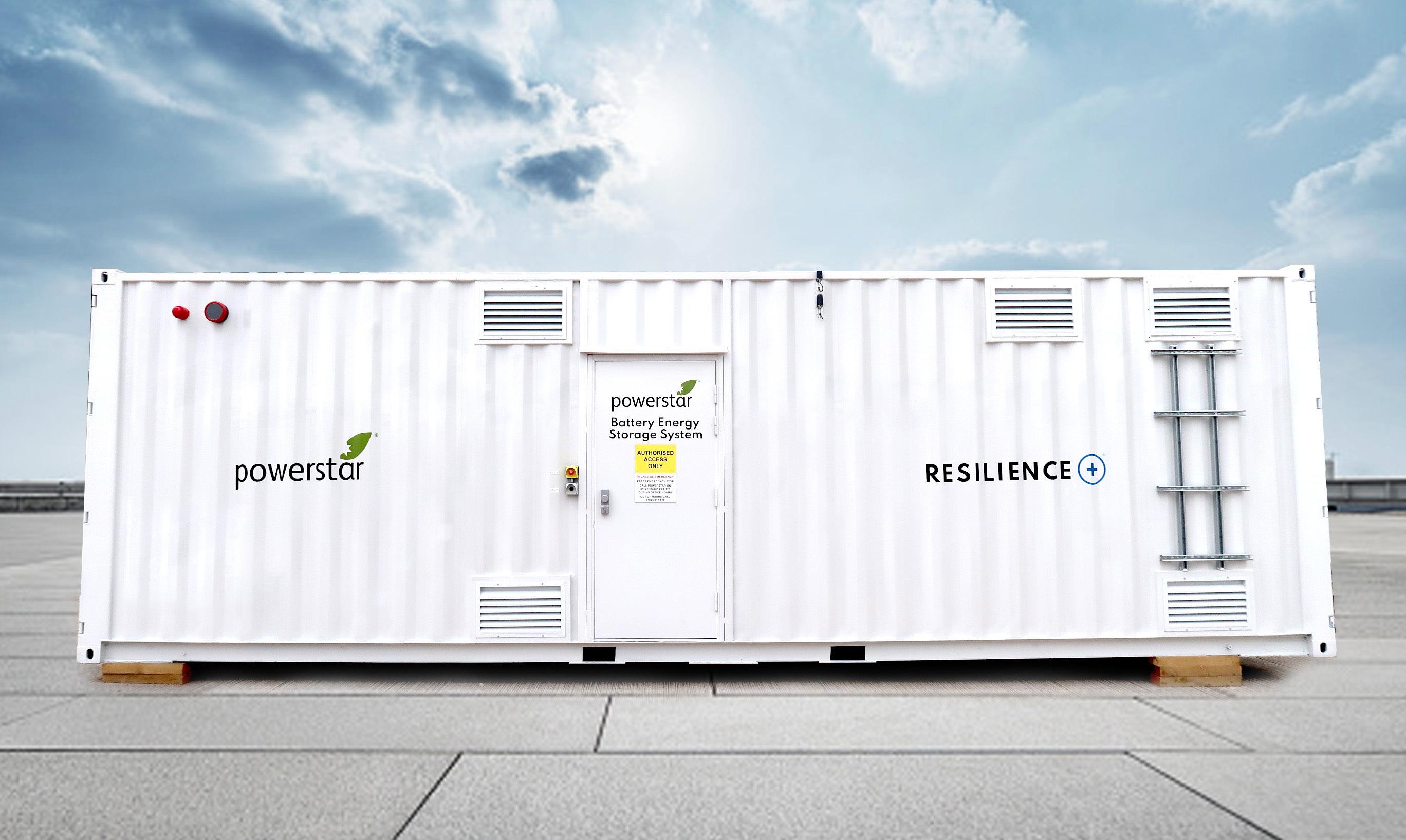

4 FREE conference theatres



Industry expert speakers


The latest product innovations

Unrivalled networking opportunities






































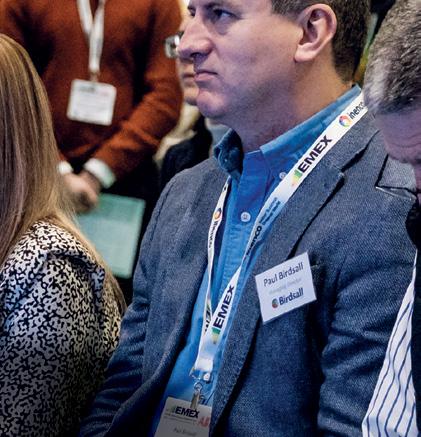










PROUD MEDIA PARTNERS











SPONSORED BY The Net Zero & Energy Management Expo 22-23 November 2023 • ExCeL London REGISTER TODAY







































































































































































